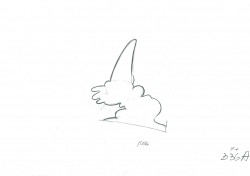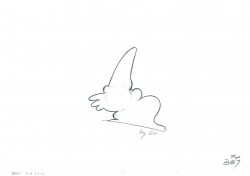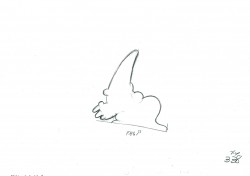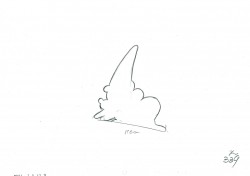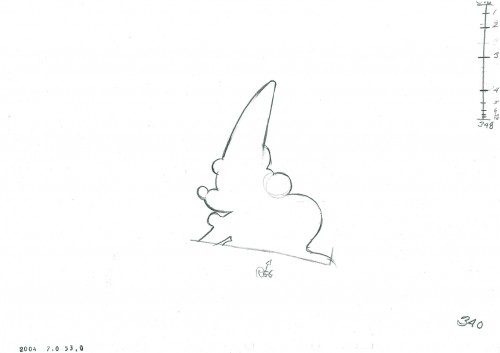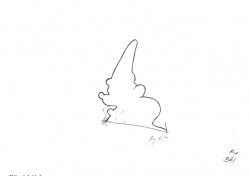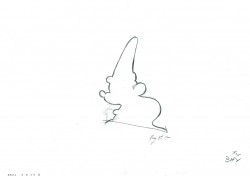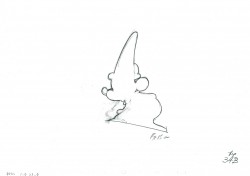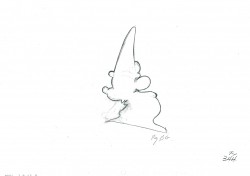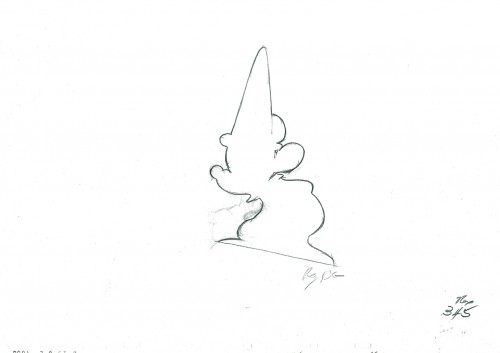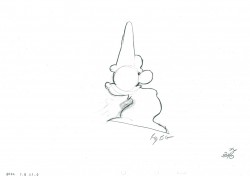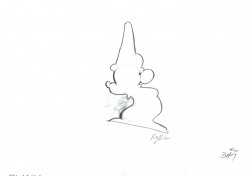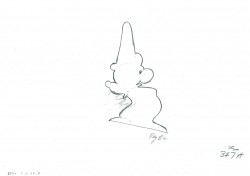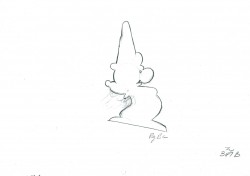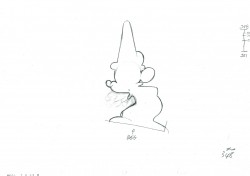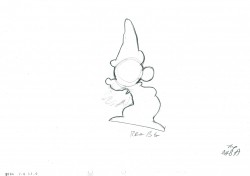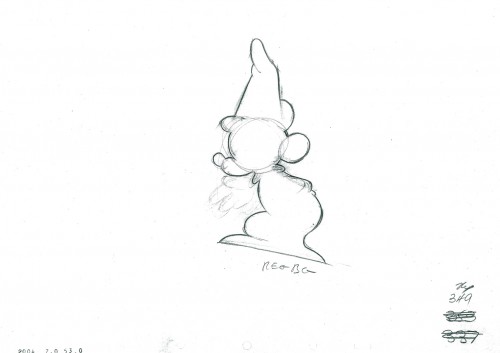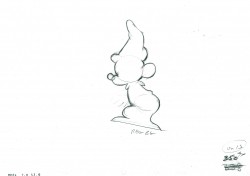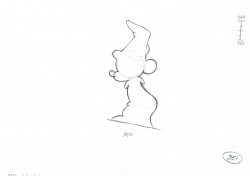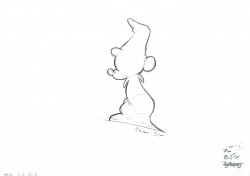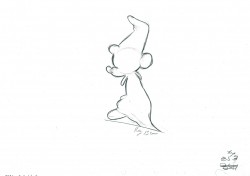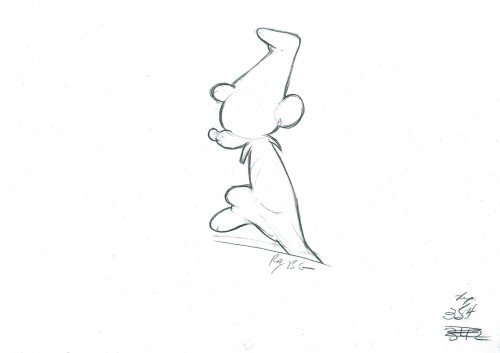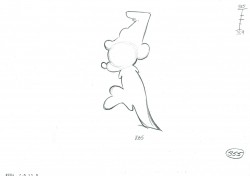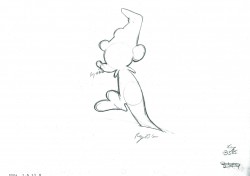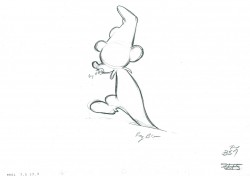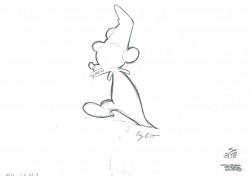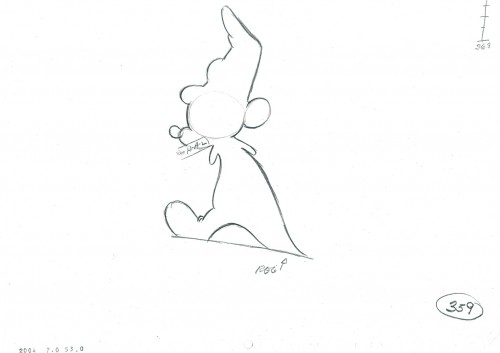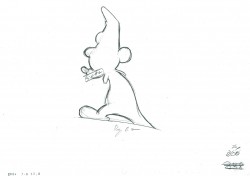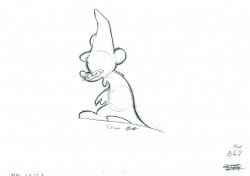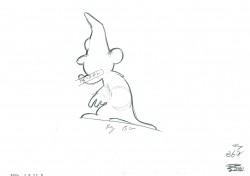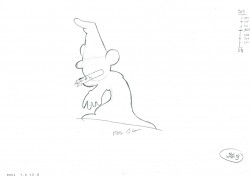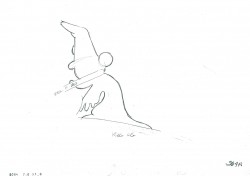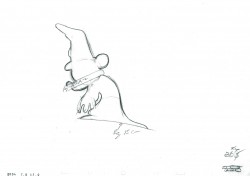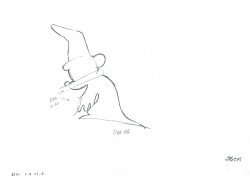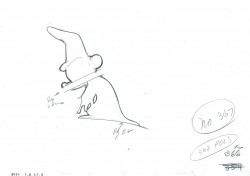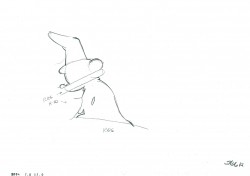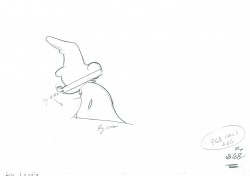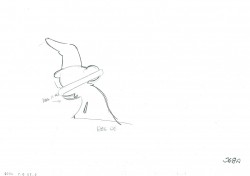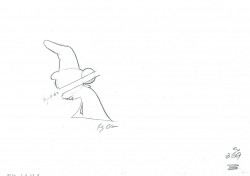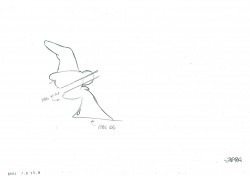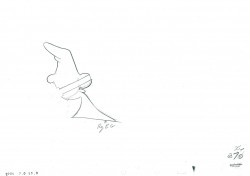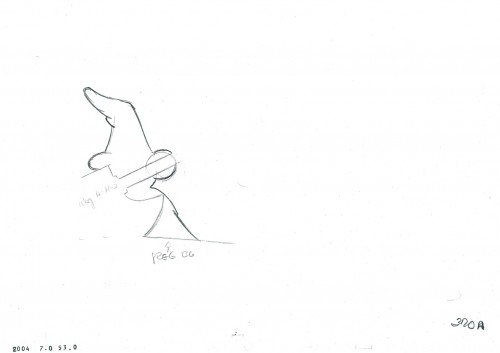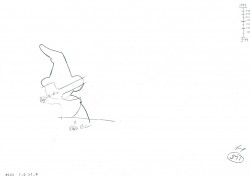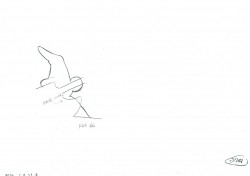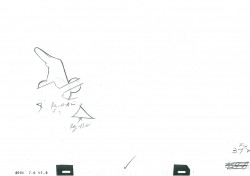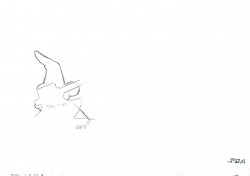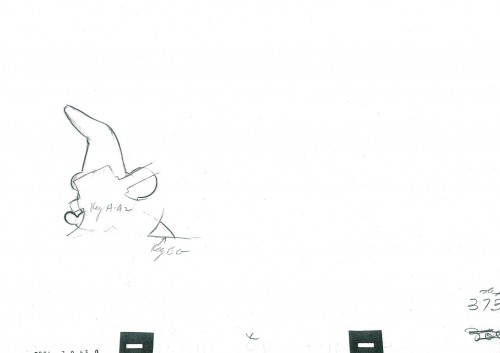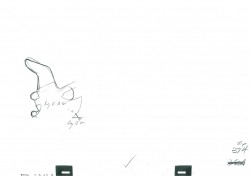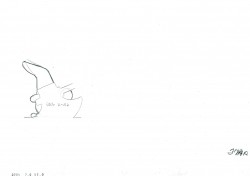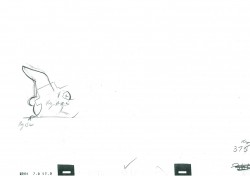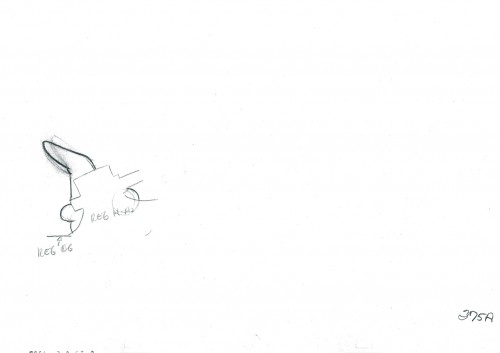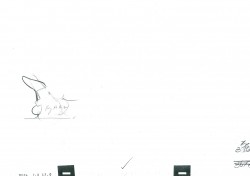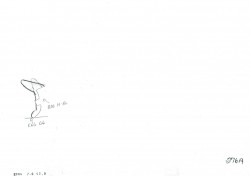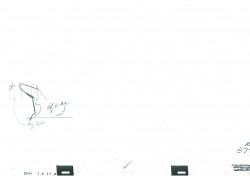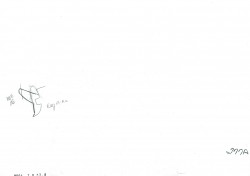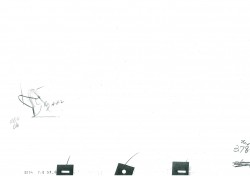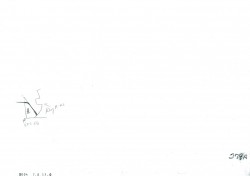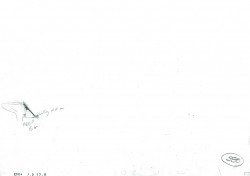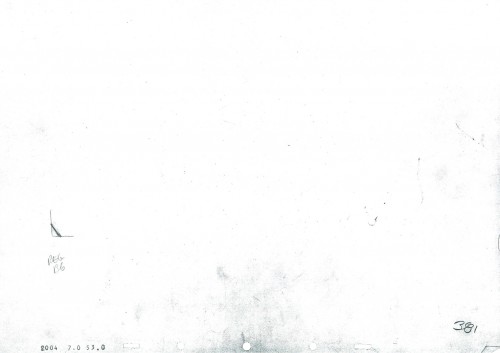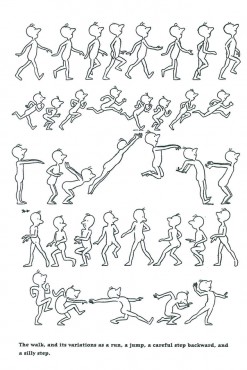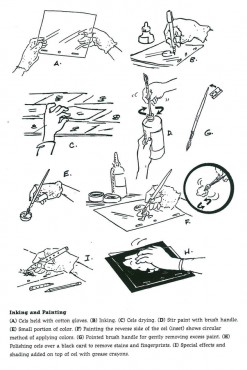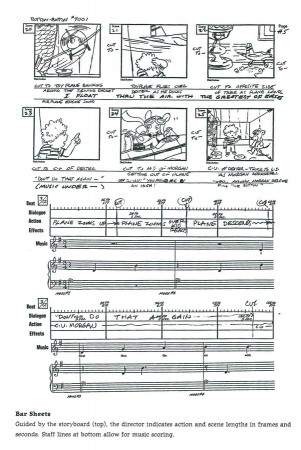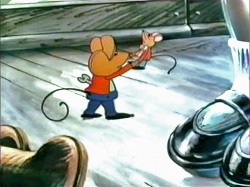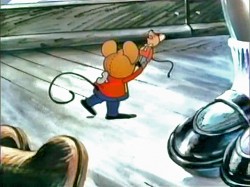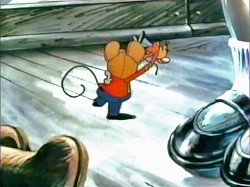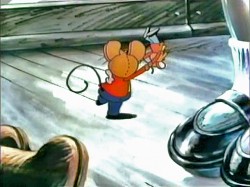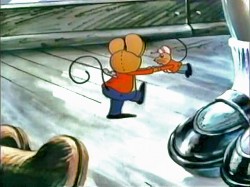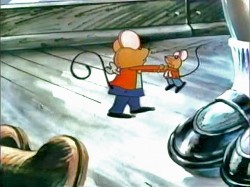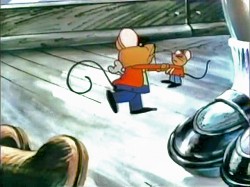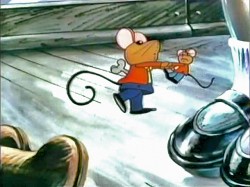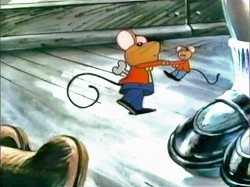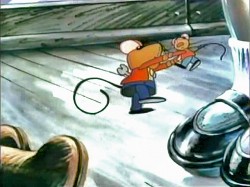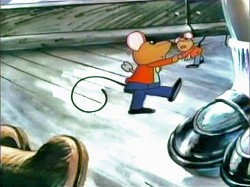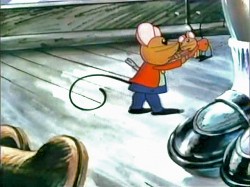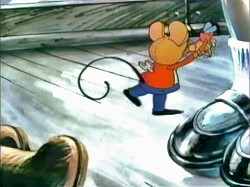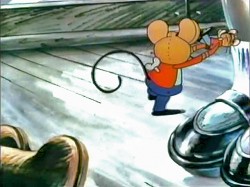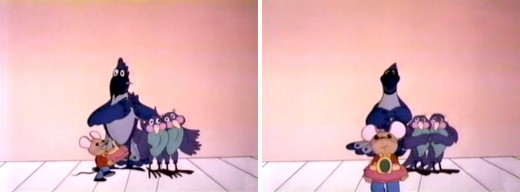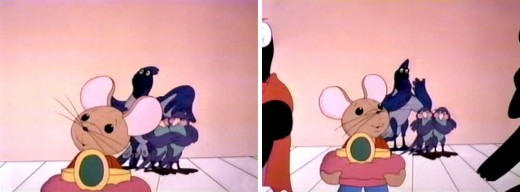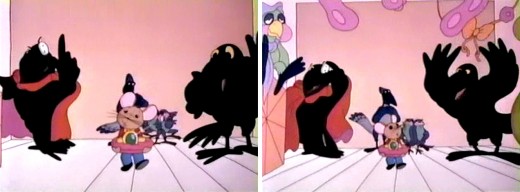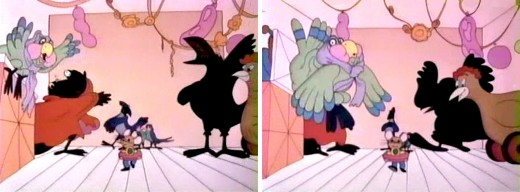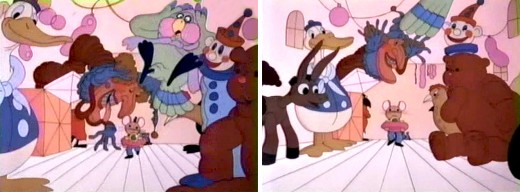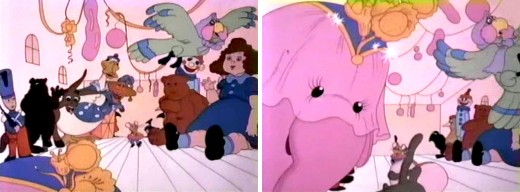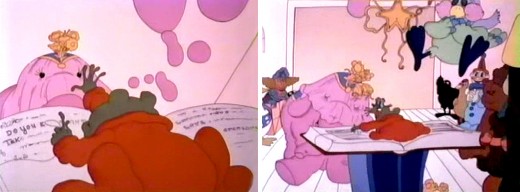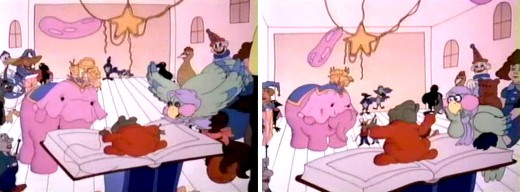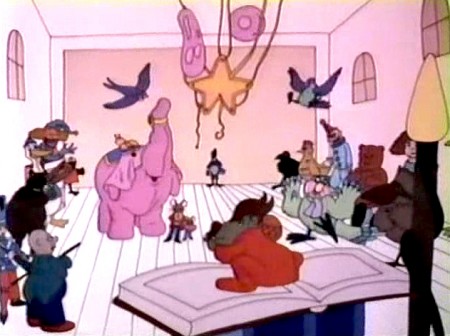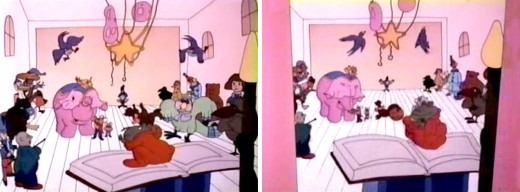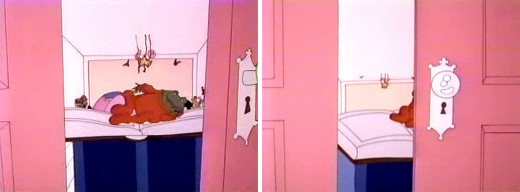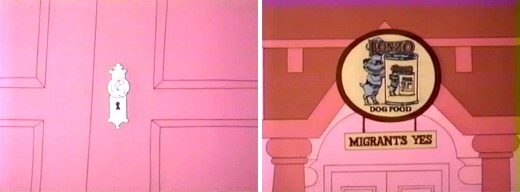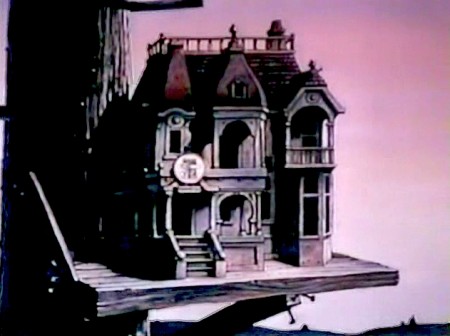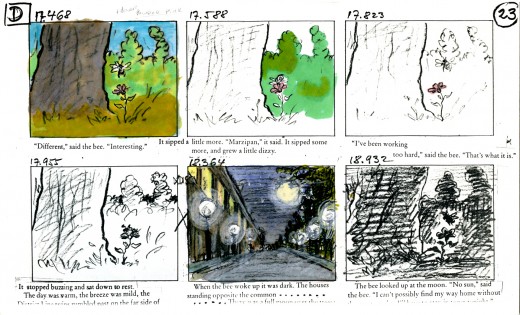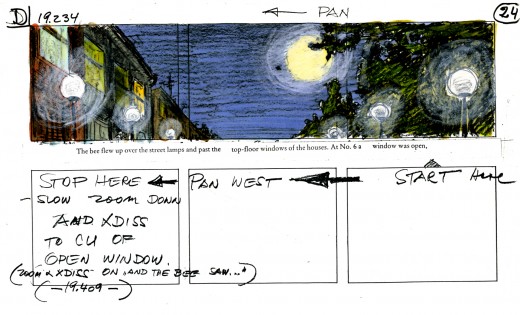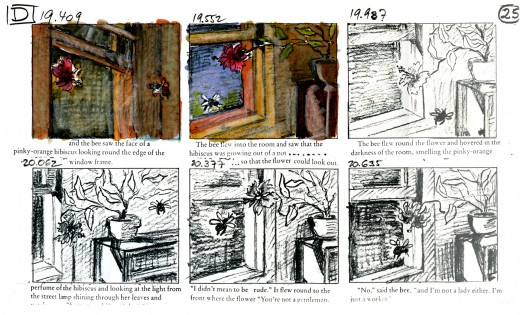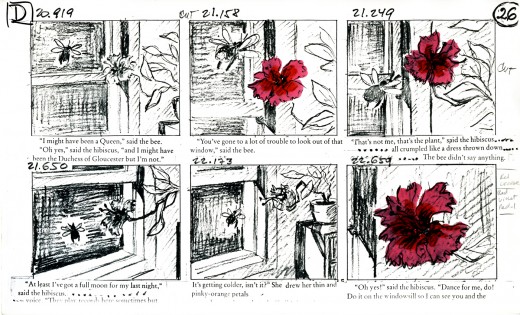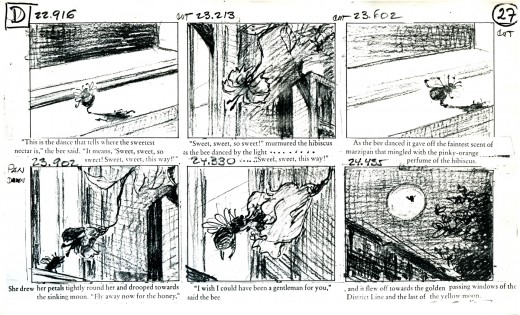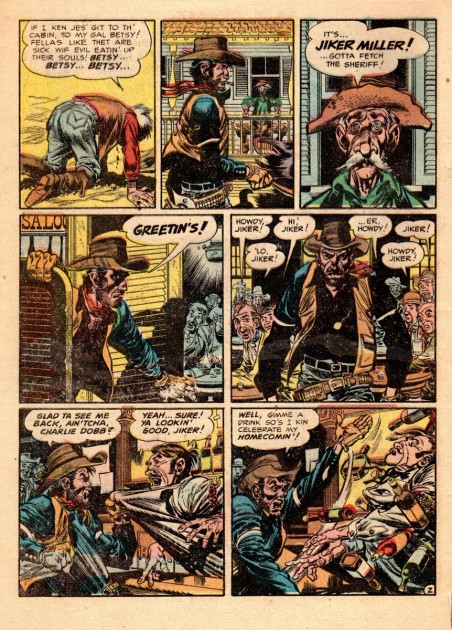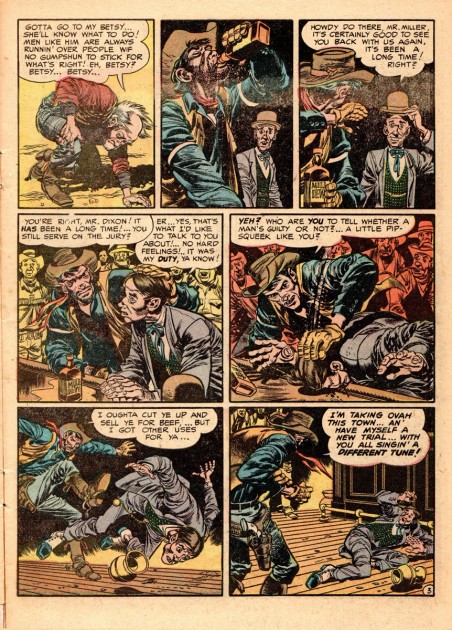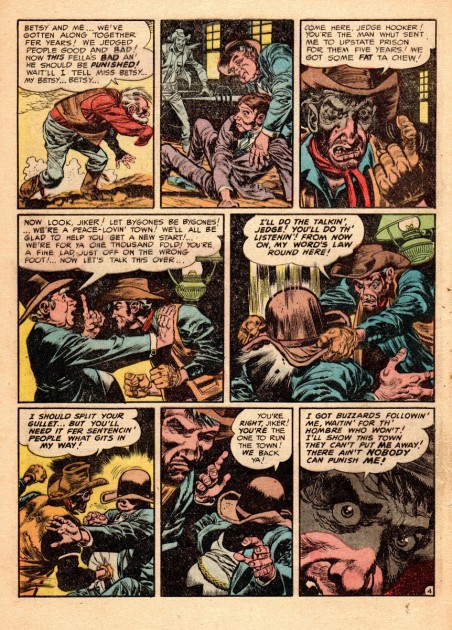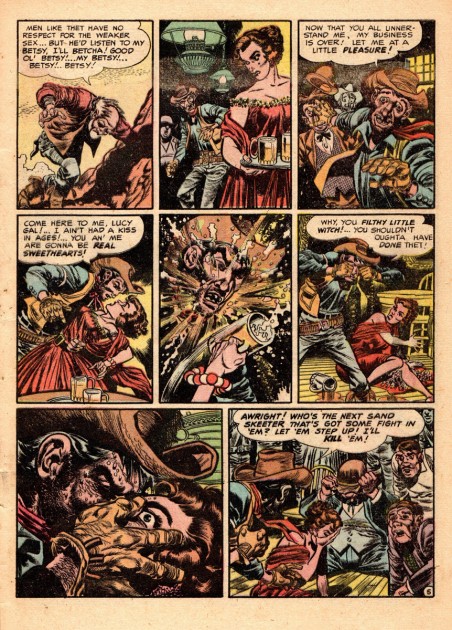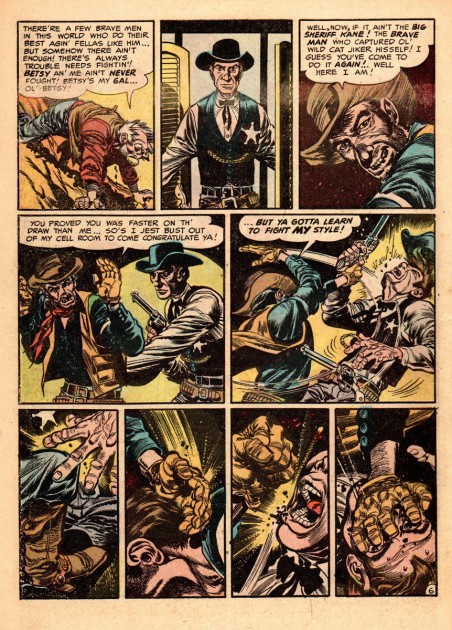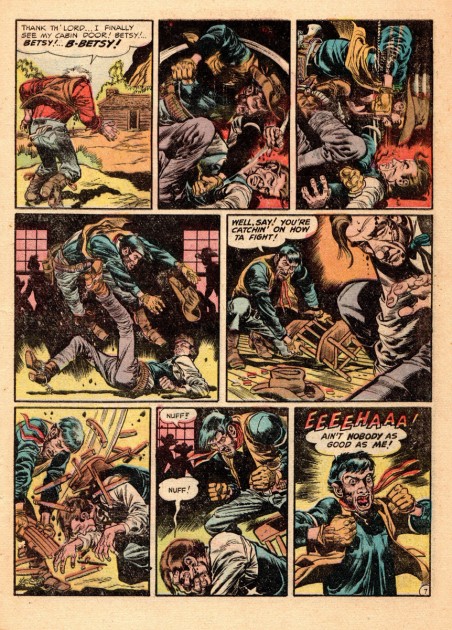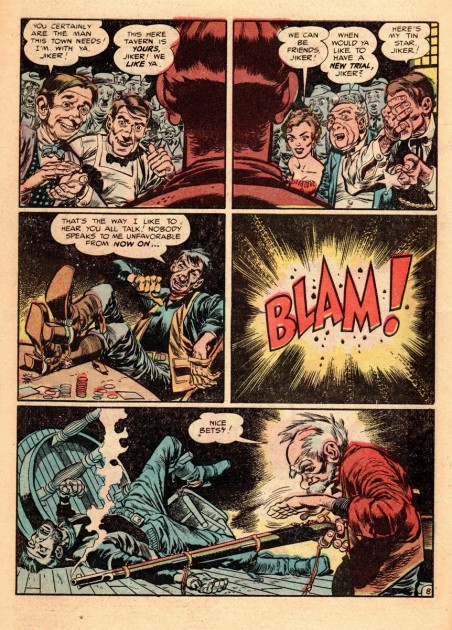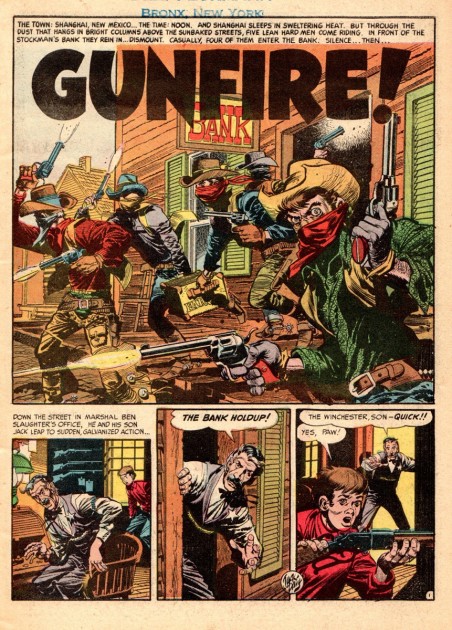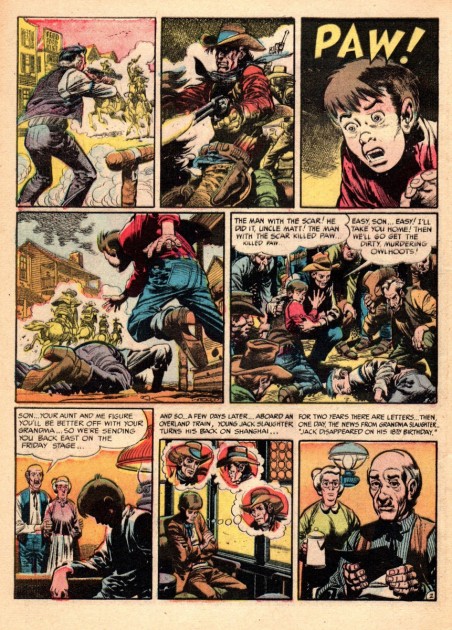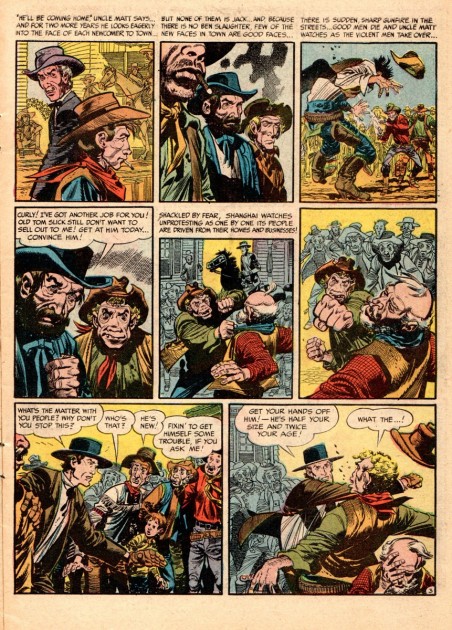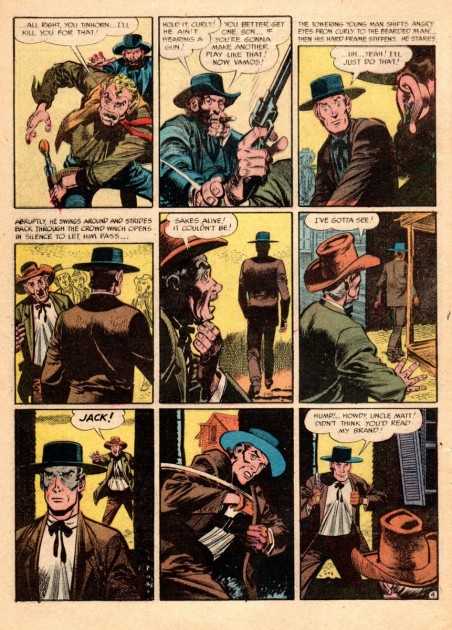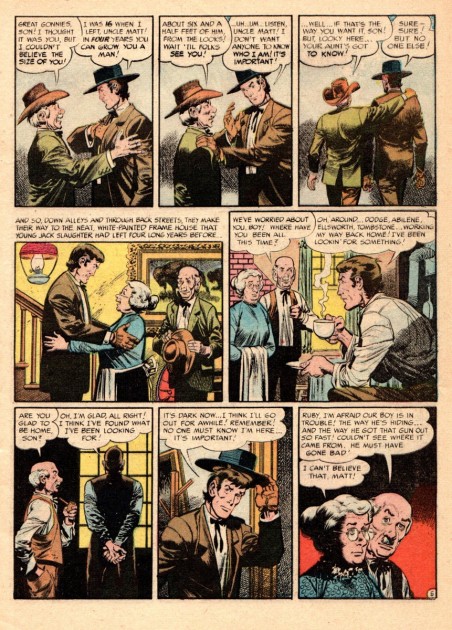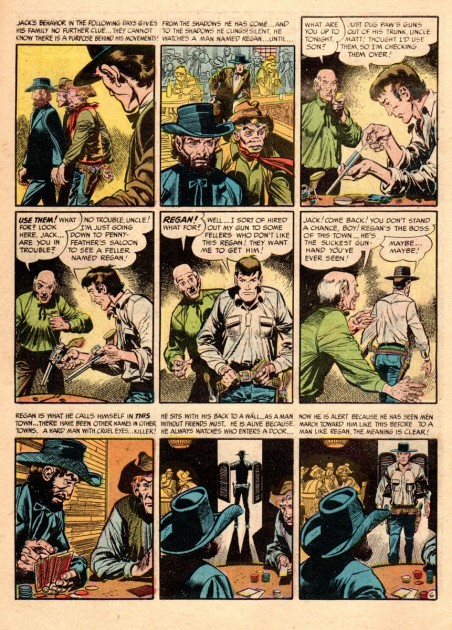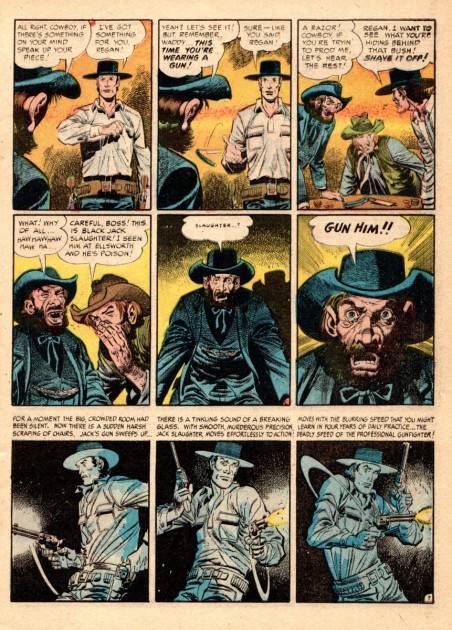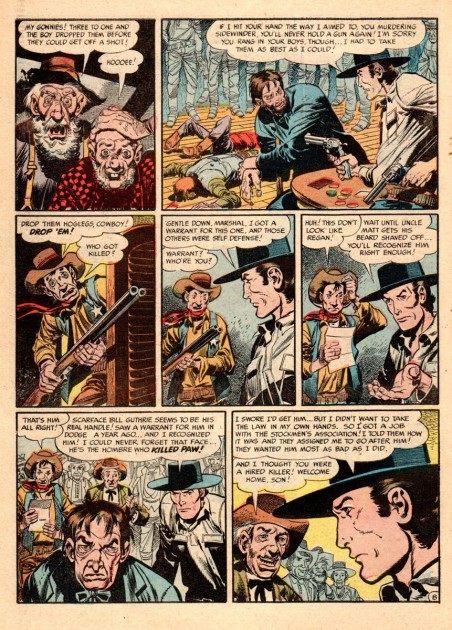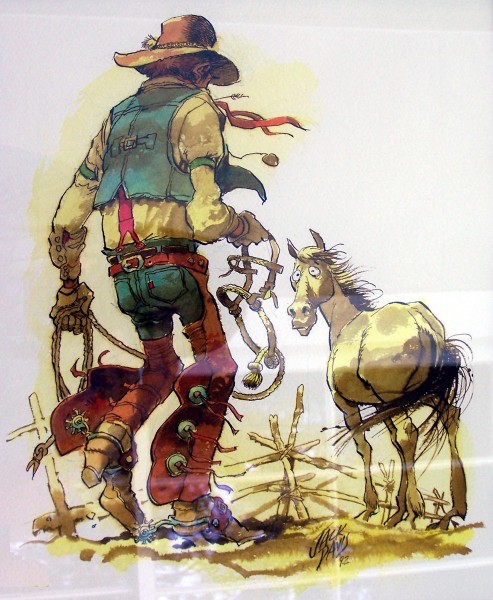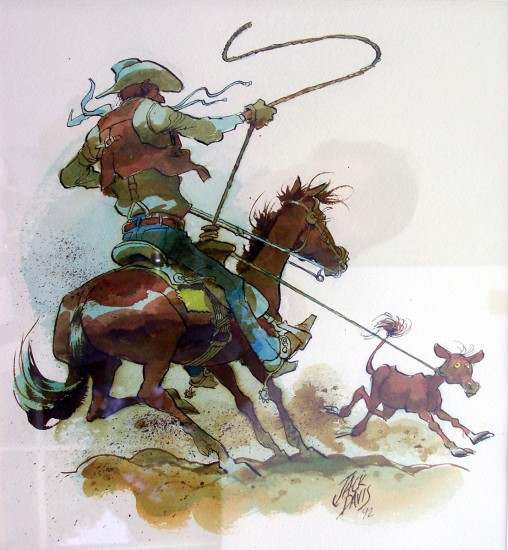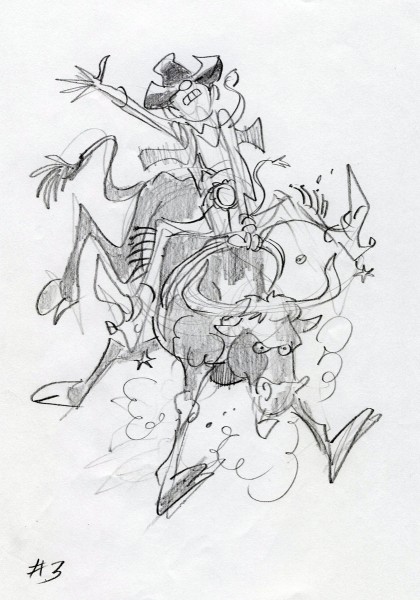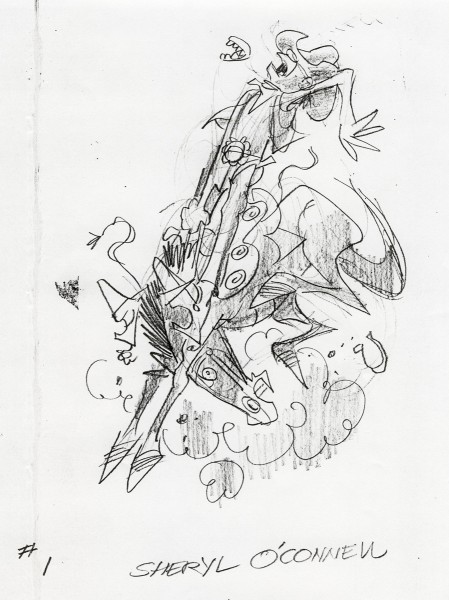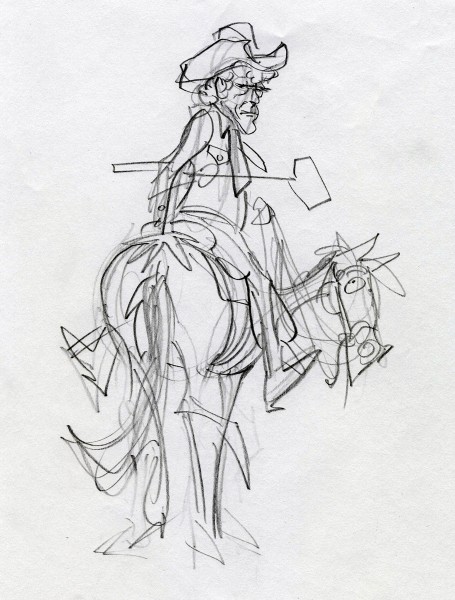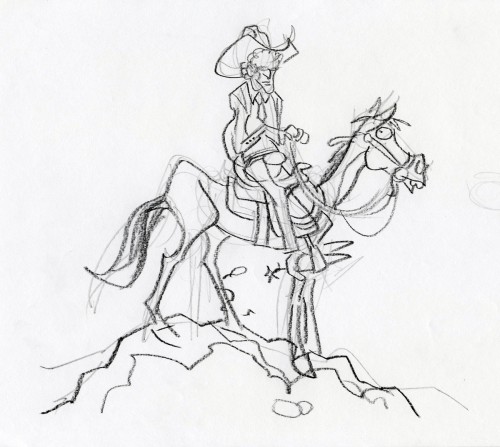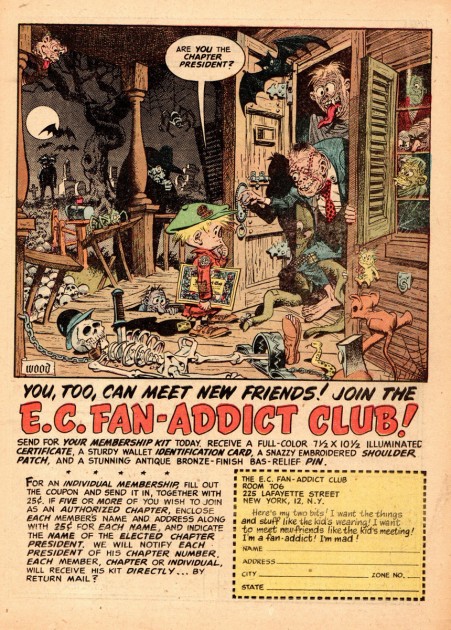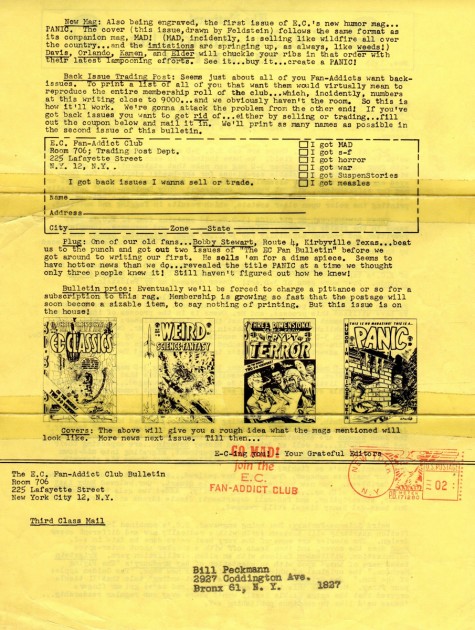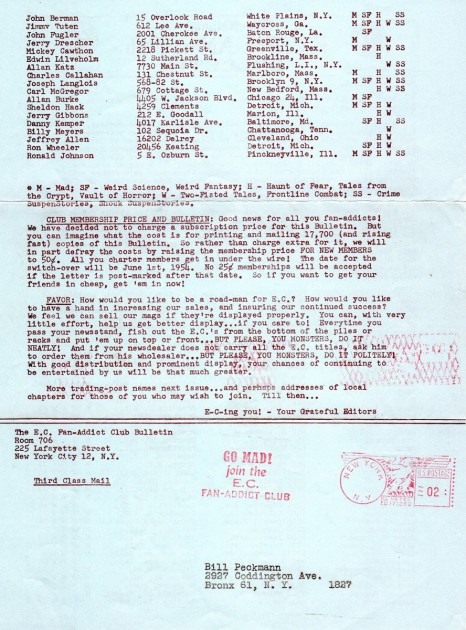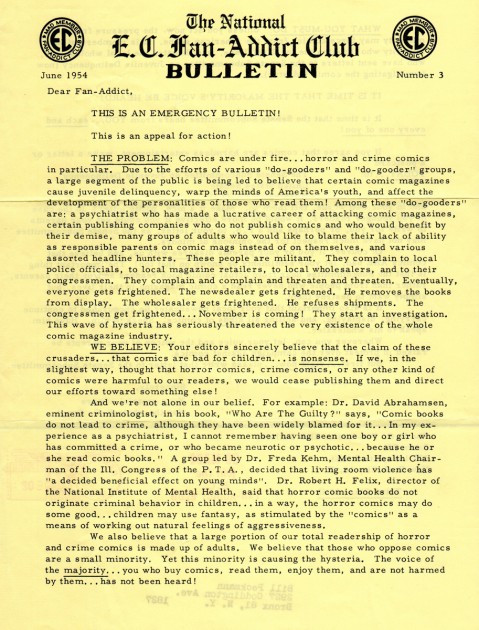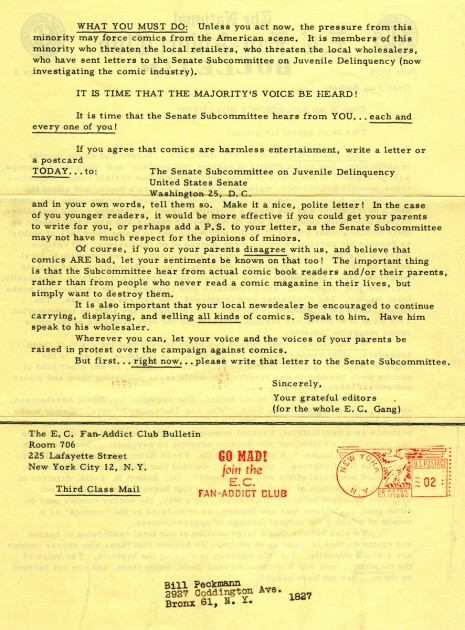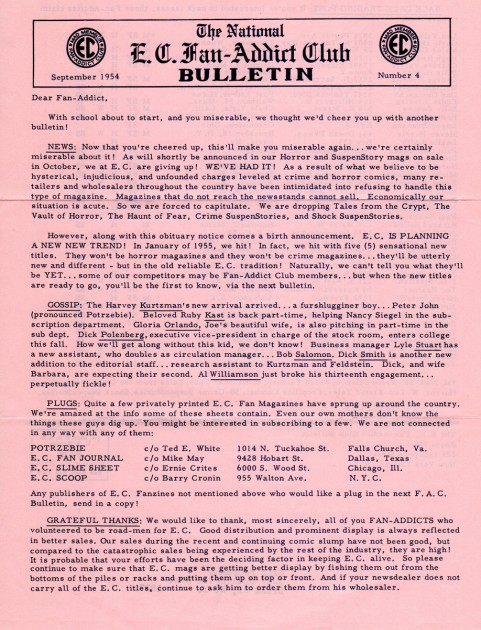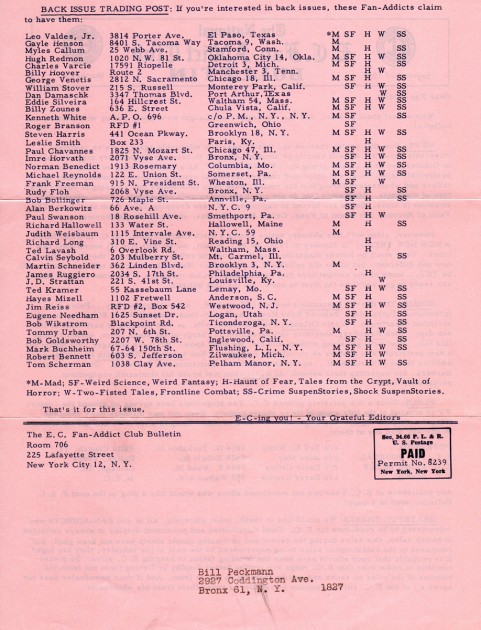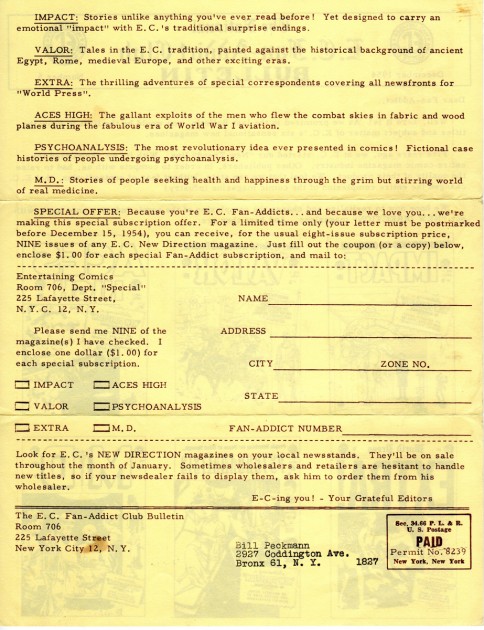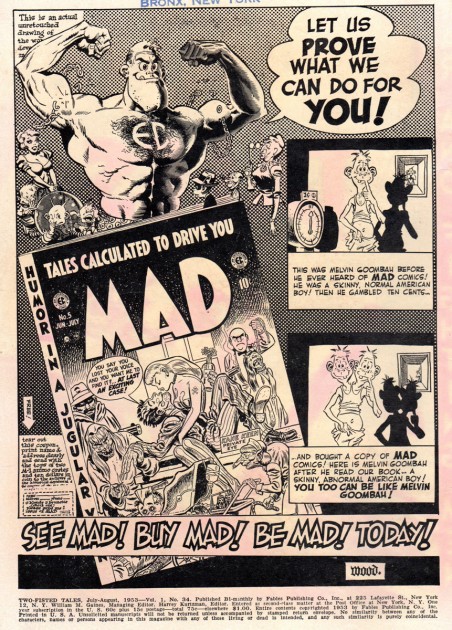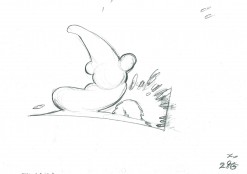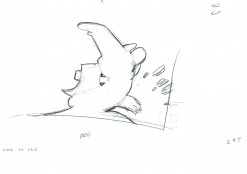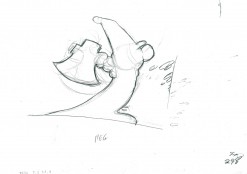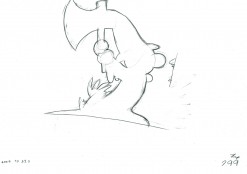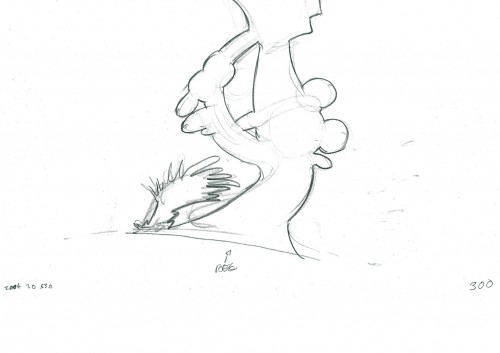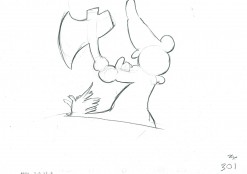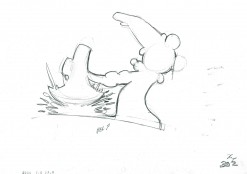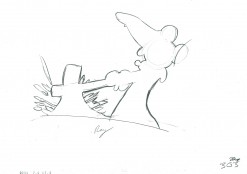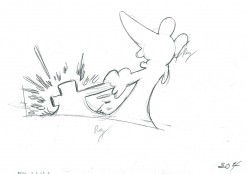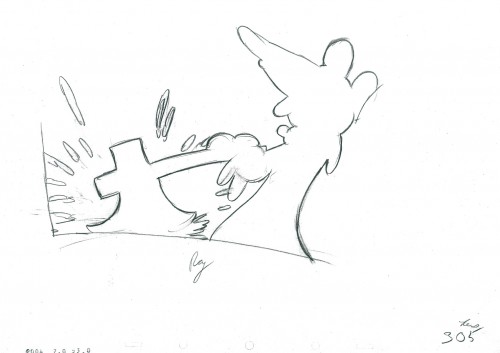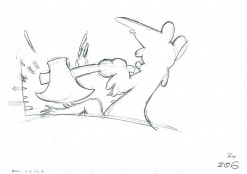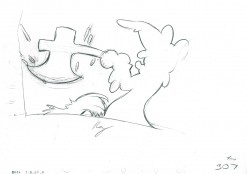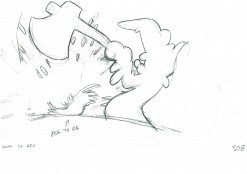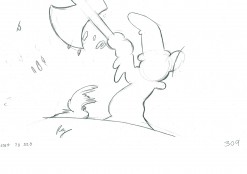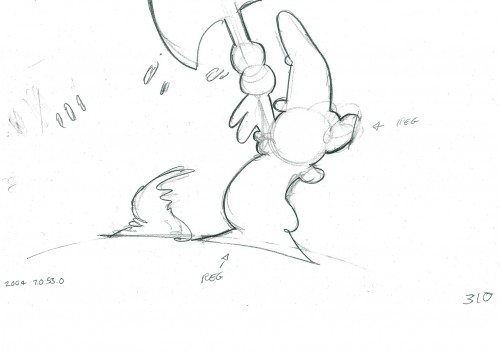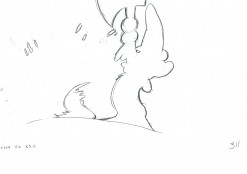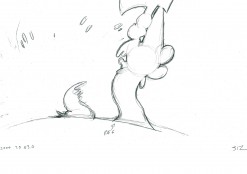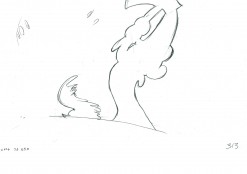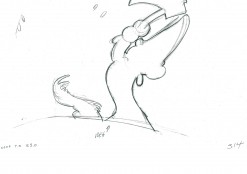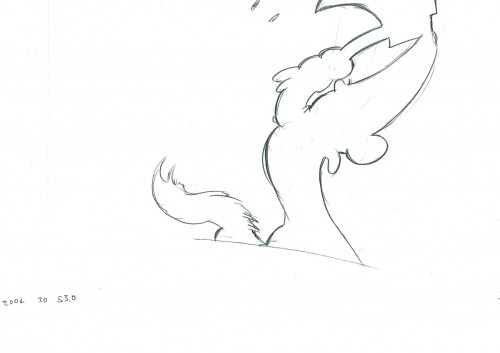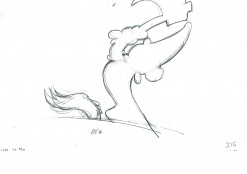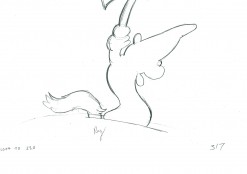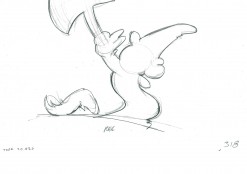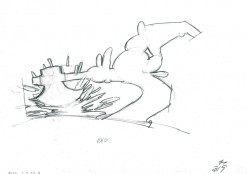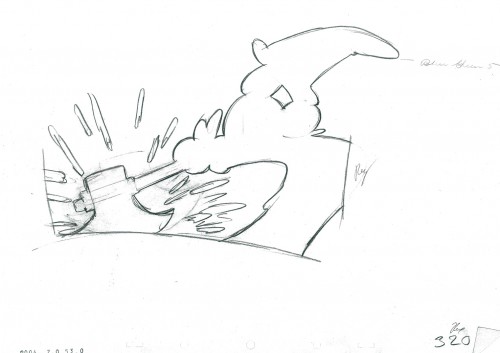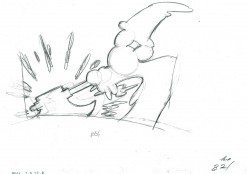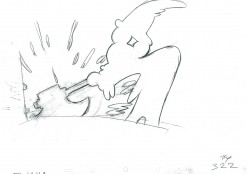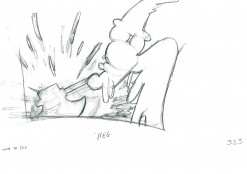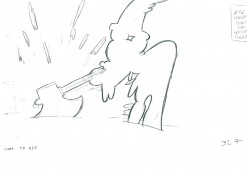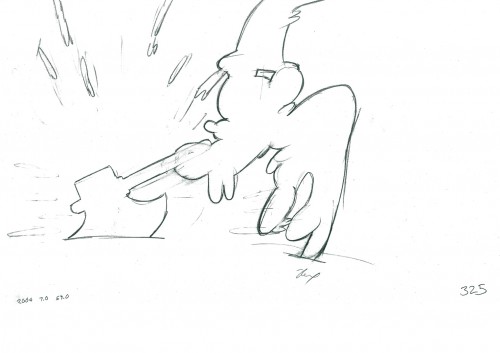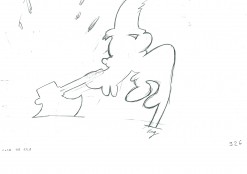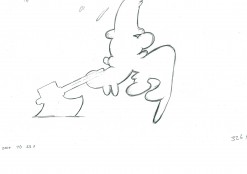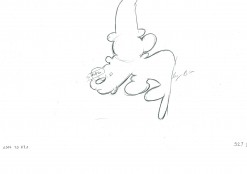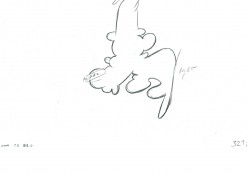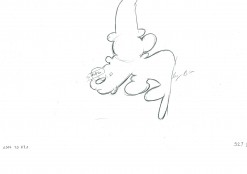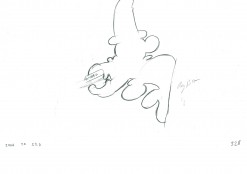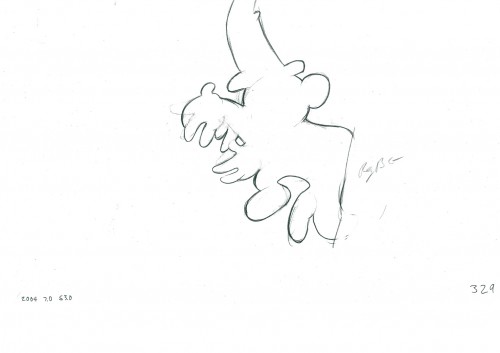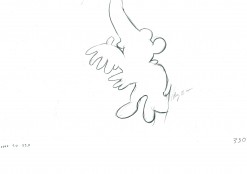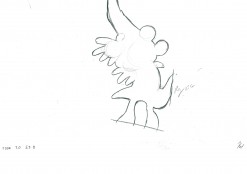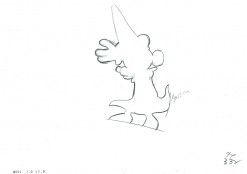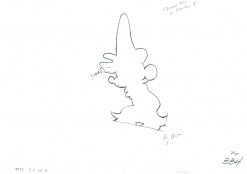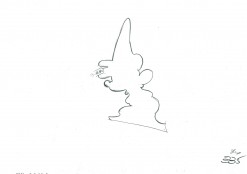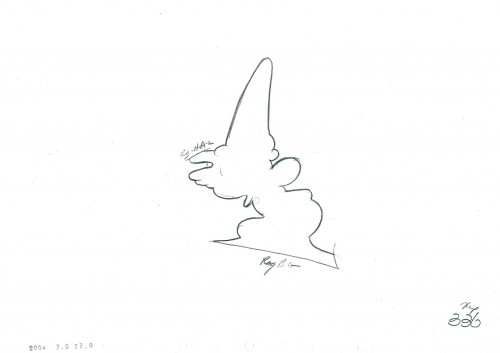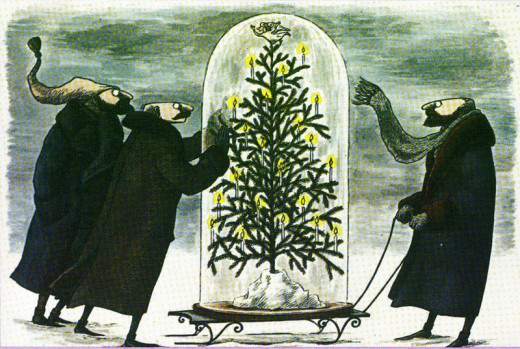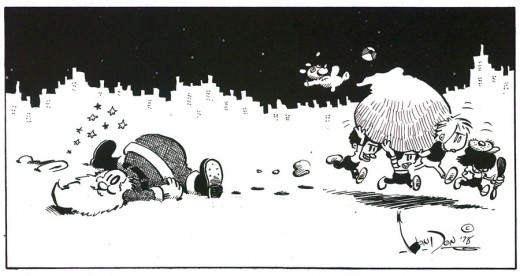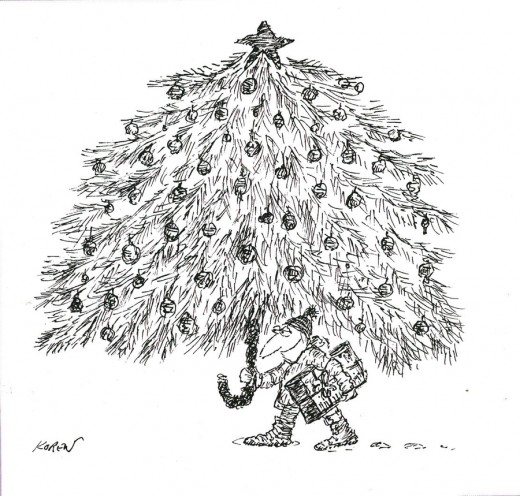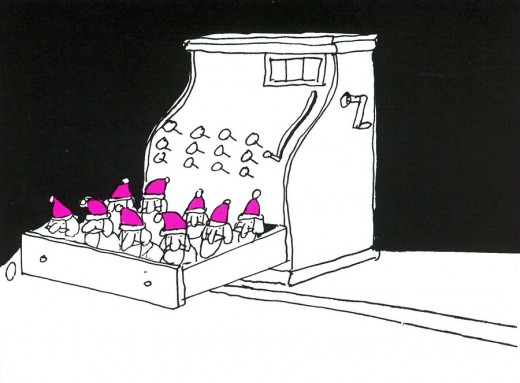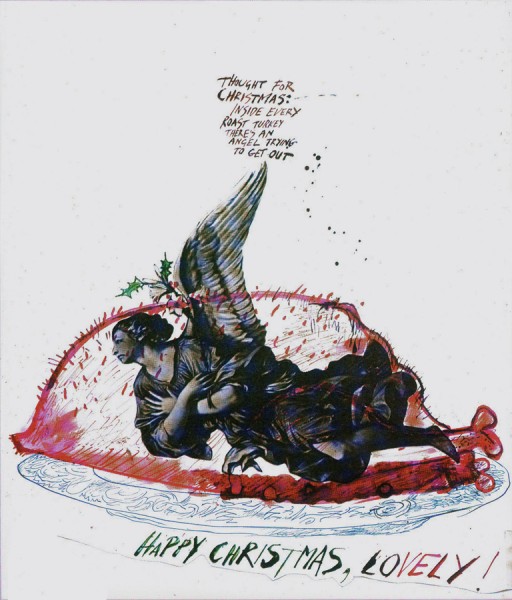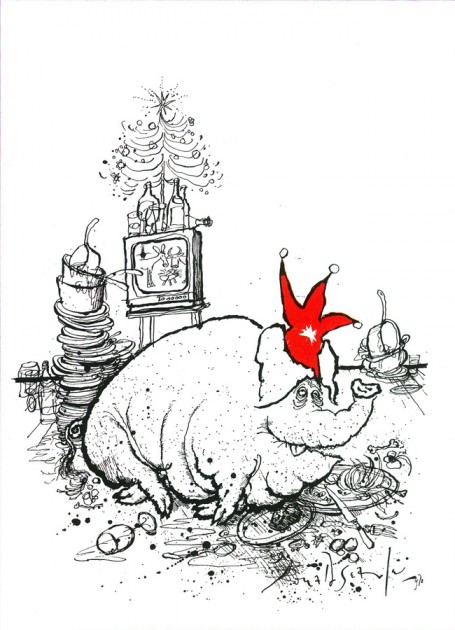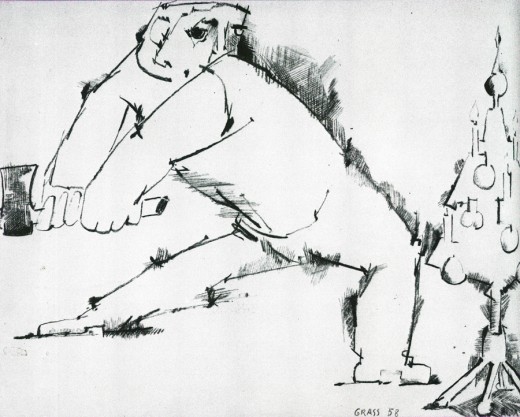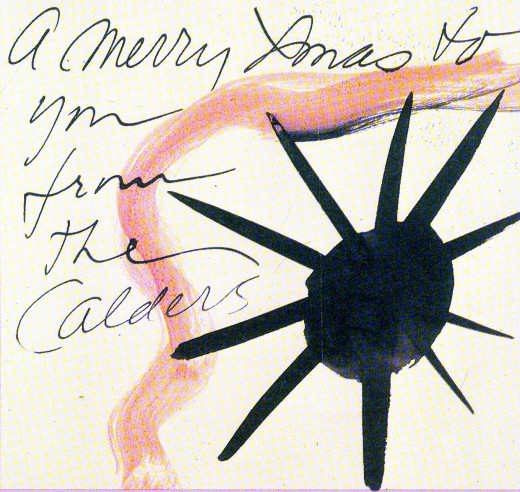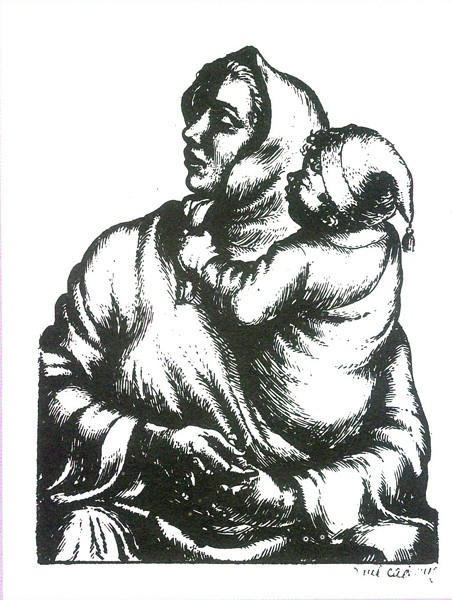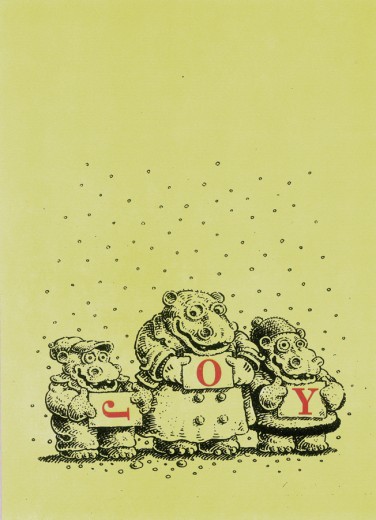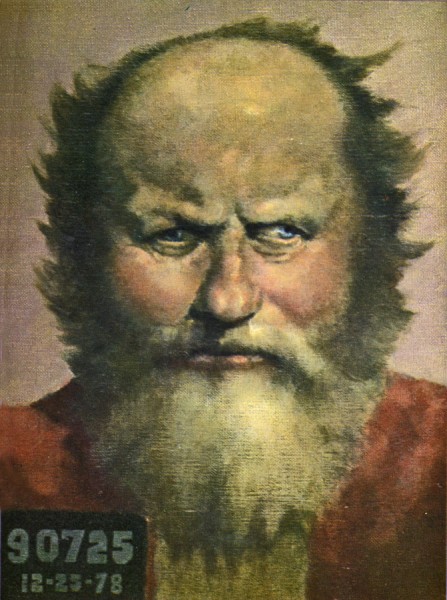Monthly ArchiveDecember 2011
Animation &Animation Artifacts &Disney 21 Dec 2011 07:26 am
Mickey and the Shadows – 4
- We end the animation of the Shadows in this scene where Mickey conquers the undead, the brooms. The violent attack on the broom that he brought to life is done completely in shadows.
We have left Mickey walking out of the backroom and into the light. That will come next week.
The scene was animated by Riley Thompson with Harvey Toombs assisting. The sequence director was James Algar.
To see the last three parts of the shadows go to: Part 1, Part 2, Part 3
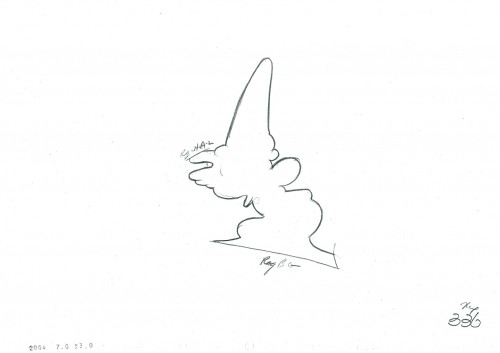 336
____________________________
336
____________________________
The following QT incorporates all the drawings from this post
and the two earlier shadow posts.
All posts will be combined in the final piece.
All drawings were exposed per the Exposure Sheets.
this scene comes in at 5’30″
Books &Commentary 20 Dec 2011 07:42 am
Animation: The Whole Story – an Overdue Book Review
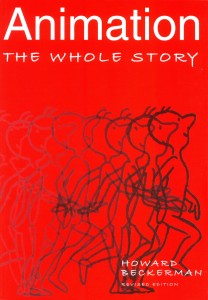 - Howard Beckerman‘s book, Animation: The Whole Story, published in 2003 by Allworth Press, comes close to being the book as described in the title. There’s an extensive history of animation, followed by a guide to animation production, followed by an analysis of the Business side of animation, and ending with exercises and a list of available resources (including schools, studio addresses, places to buy equipment and animation publications.) That’s a lot of book for the price.
- Howard Beckerman‘s book, Animation: The Whole Story, published in 2003 by Allworth Press, comes close to being the book as described in the title. There’s an extensive history of animation, followed by a guide to animation production, followed by an analysis of the Business side of animation, and ending with exercises and a list of available resources (including schools, studio addresses, places to buy equipment and animation publications.) That’s a lot of book for the price.
This is definitely a down and dirty book, just the facts ma’m, nothing but the facts, and for that I am grateful. There are no pretensions; in ways it reminds me of the Lutz animation book. The material is straightforward, and the presentation is complete. The illustrations throughout are done by Mr. Beckerman, himself, and the material is just about all-encompassing. I would use it as a classroom text were I teaching first level animation, and I’m sure there are many teachers who already do this.
There’s a lot of handy information in here, sort of an all-purpose guide to animation. It’s a bit like one of those tool boxes that have every 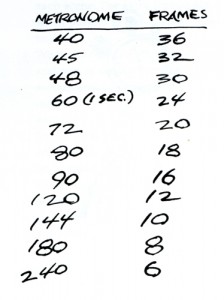 sort of wrench in it, so that you’re always prepared. There are directions for setting up a director’s workbook, how to do a storyboard, even a guide for properly flipping paper-drawn animation. There is an explanation of a field guide, frame to footage counters, information on how to build a drawing table light box, and even an explanation of exposure sheets – showing how to fill them out. I don’t think I’ve ever seen a book that transposes the meter on a metronome to frame counts. This has always been information handed down from one animator to another. Books don’t include it. This one does. This is incredibly useful for any animator looking to animate to a beat, and all animators SHOULD be doing that.
sort of wrench in it, so that you’re always prepared. There are directions for setting up a director’s workbook, how to do a storyboard, even a guide for properly flipping paper-drawn animation. There is an explanation of a field guide, frame to footage counters, information on how to build a drawing table light box, and even an explanation of exposure sheets – showing how to fill them out. I don’t think I’ve ever seen a book that transposes the meter on a metronome to frame counts. This has always been information handed down from one animator to another. Books don’t include it. This one does. This is incredibly useful for any animator looking to animate to a beat, and all animators SHOULD be doing that.
Howard Beckerman has been teaching animation and the history of animation in New York at the School of Visual Arts and Parson’s School of Design for a very long time. He’s also a professional having directed, designed and animated for many companies, including Paramount, as well as for his own company. He’s done many short films as well as written hundreds of articles for film and animation magazines. He knows his stuff.
This, to me, is most evident in the first half of the book, the history of animation section. This is a no-nonsense guide to the history from the beginning days right through the book’s publication date – 2003. In 85 pages he covers more material than many other elaborate and celebrated books. And the amazing thing is that it’s 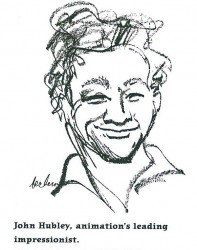 all accurate and correct material. I don’t think I’ve ever covered so much history – and it’s WORLD HISTORY – in so short a read. Yet it feels like nothing is left out. This is quite a feat. For my money. this is the absolute strength of the book.
all accurate and correct material. I don’t think I’ve ever covered so much history – and it’s WORLD HISTORY – in so short a read. Yet it feels like nothing is left out. This is quite a feat. For my money. this is the absolute strength of the book.
The weakness is one you can probably guess at from the descriptions I’ve already given. The book came out in 2003, and quite a bit has changed. There’s virtually no reason anymore to read about the Oxberry camera and how it works. The same could be said of the inking and painting of cels or even field guides and exposure sheets. Don’t get me wrong, I think it’s absolutely vital for everyone in the business to know this information, but I know it’s not part of the job anymore. Today’s book would be more about the computer: Flash and AfterEffects, Toon Boom Studio and FlipBook. The book is peppered with
caricatures of key people.
Perhaps someday there’ll be a new edition with more of that information. Although to be frank, there are hundreds
of books telling how to use the software. There are a lot of young kids making their animated films in Flash and calling themselves animators. Perhaps if they read this book, as it is, they’d have a bit more of a grasp as to what an animator does.
There’s so much in this book, I wholeheartedly recommend it if you’re looking for a great “how to” book. Even if you’re not, that history of animation section is world class.
Here are a few of the many illustrations in the book:

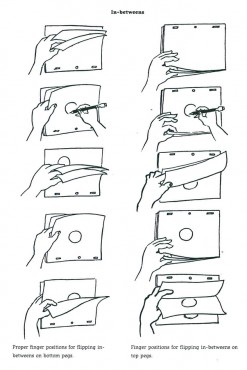
1. Building a lightbox - – - – - 2. Flipping and Rolling Animation - – - – - – - – - 4. How to Ink & Paint cels
It’s a practical little book, and is well worth checking out. (There are copies on Amazon that are incredibly inexpensive!)
Commentary &Independent Animation 19 Dec 2011 06:07 am
The Mouse and His Child Go On
- As I wrote yesterday, the author, Russell Hoban died on Dec. 13th at the age of 86. He was a favorite author of mine. I was lucky to have met him after we completed an animated version of his book, The Marzipan Pig. Prior to that, a feature had been done of his children’s novel, The Mouse and His Child. Here’s a couple of pieces I did about that feature in the past few years.
Sanrio, a Japanese company that made all their money on Hello Kitty products, produced two animated features in the US. Metamorphosis and The Mouse and His Child. Both films failed at the box office. However, The Mouse and His Child, directed by Fred Wolf and Chuck Swenson, has some small glimmers of fine animation throughout the film.
I don’t really know who did any of the animation. Corny Cole, certainly, did the big closing animated zoom of the film. I sought out the work of one animator I liked, and it turned out to be Vincent Davis. It was the first work I saw by him, and I’m still charmed by it.
Here’s a small walk at the beginning of the film. Lots of shape shifting in the assisting, but there’s something nice about it, too. I don’t know who animated it.
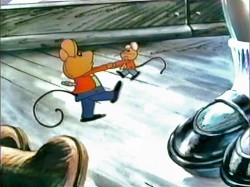 1
1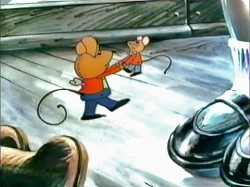 2
2
______(Click any image to enlarge.)
The Mouse and His Child has some real charm. However, it created a small problem for me.
When I’d begun work on The Marzipan Pig, I had to guarantee the brilliant writer, Russell Hoban, who authored both books – The Marzipan Pig and The Mouse and His Child – that no spoken dialogue would be created by me or Maxine Fisher, who was writing the script. Hoban was annoyed by the script for The Mouse and His Child. He felt they had butchered his story.
In fact, the film ends 3/4 of the way into the story. Elements of the last quarter of the book are rushed through the film in one last scene before the end titles. (I have to admit it’s a bit confusing.) This is a scene Corny animated. It’s all one scene; no cuts; an animated BG.
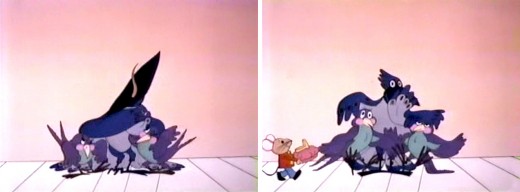
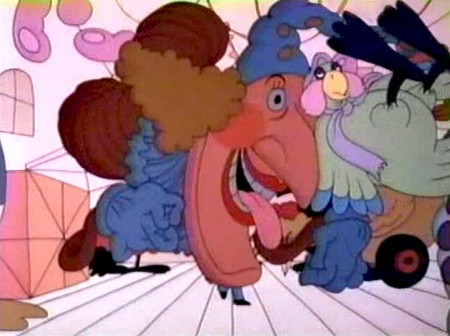
The Jack In The Box looks very different from the guy in Raggedy Ann.
You can watch this film on YouTube.
Commentary &SpornFilms 18 Dec 2011 06:30 am
Russell Hoban 1925-2011
- We couldn’t get by another week without more sad news. I was hard hit yesterday when I learned that Russell Hoban had died on Dec. 13th. He’s been one of my favorite authors for years. I produced and directed an animated version of one of his books, The Marzipan Pig back in 1983. It was not easy getting funding for it. I gave my backer a choice of two of his books, and they were into transubstantiation so it was The Marzipan Pig.
There is a great quote in the Washington Post obituary: “If I am kept away from writing I become physically unwell,†he told the Guardian in 2002.†It is art and the creation of art that . . . make me feel it is a good thing to be part of the human race.â€
Here’s the NYTimes obituary.
Here’s the obit from the Washington Post.
Here’s a great piece from The Scotsman.
When we completed The Marzipan Pig, Hoban came to NY from his home in London. We arranged a screening for him after which Tissa David, he and I went to lunch. In his very dry way, he told me that he was pleased with the film. As I do with all authors, I asked for criticism not compliments, and he told me there was only one complaint. We didn’t get the bridge quite right at the end of the film. Of course he was right, and it’s hard for me to watch those final scenes, now, without thinking about that damned bridge.
I’ve read every book of his I could including at least 60 of the children’s books and all of his adult novels. In film, I know only of the work we’ve done and The Mouse and His Child. Unfortunately, the feature film stopped midway through the book’s story. It’s a brilliant book and what they did of the story carries whatever is happening on the screen. Tomorrow I’ll post some material about that feature.
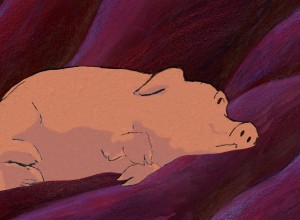 For The Marzipan Pig DVD we included a copy of a section of the animatic. This includes the actual film superimposed over the stills so you can make a comparison as the film runs. Film in film. I like this format; you can really take in the animation and layout of the piece when both are on the split screen.
For The Marzipan Pig DVD we included a copy of a section of the animatic. This includes the actual film superimposed over the stills so you can make a comparison as the film runs. Film in film. I like this format; you can really take in the animation and layout of the piece when both are on the split screen.
I thought I’d post here some of the storyboards and the animatic for that section. Of course, this is in a low res version; more can be discovered in the dvd version.
Tissa David did the storyboard and animated the entire film by herself. This film is a beauty, if I do say so myself. It’s a truly adult film, though it was sold as a family film. It deals with love in all its forms, albeit, obviously, through metaphor. It was adapted from a brilliant children’s book; one of Russell Hoban‘s finest.
Quentin Blake illustrated the original book, and we didn’t purchase the illustrations. Hoban told us that it wasn’t how he’d imagined the pig to look, so he drew it for us. He was once an art director in an ad agency, so he was able to draw. This is the pig we used.
Hoban had hated what was done with his book, The Mouse and His Child, so demanded that all the spoken dialogue in the film be found among his words. We wrote a script; Maxine Fisher went to London to work with him in revising it. Finally, when it came to recording the actor Tim Curry, I threw out the script and had him read the book – with the exception of one line. It was a good decision, and it made for a great performance from a great actor.
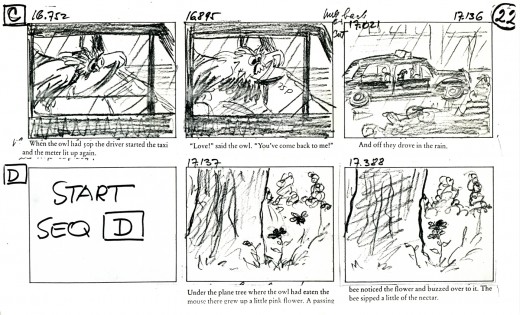
_____________(Click any image to enlarge.)
You’ll notice that some changes were made
in scenes and scene cuts as the animation progressed.
This is typical.
The Marzipan Pig will air on HBO Family Tuesday December 27th
7:30 AM HBO FAMILY – EAST
10:00 AM HBO FAMILY – EAST
10:30 AM HBO FAMILY – WEST
1:00 PM HBO FAMILY – WEST
After that check each month at Michael Sporn Animation.com for future screenings.
Here’s are two films we did for a home video of children’s poems. The first is a poem by Russell Hoban. The animation is by Mark Mayerson, and the design is by Jason McDonald. The music is by Caleb Sampson. I think all of these artists did brilliant work, but then Hoban’s thoughts and words always pull out the best.
Russell Hoban’s The Tin Frog
This second poem of Hoban’s also brought out the best in the artists, Jason McDonald who designed and storyboarded the whole piece. The excellent animation was by Sue Perrotto..
Russell Hoban’s Jigsaw Puzzle
Click left side of the black bar to play.
Right side to watch single frame.
Commentary &SpornFilms 17 Dec 2011 07:23 am
Sightings
This week was another packed week full of tight deadlines and lotsa movies. We finally got the go-ahead for our airline safety film. We contracted in March, started the board in April. The first pass was done by early May, but we went through another dozen versions adapting it to the client’s request. The thing was so tight that I don’t have to do layouts. The client has no conception of how to do animation, so despite the low budget, I have to try to educate them as I make the movie. It’s not fun. The voice recording was done three times. The track is very good, but I also thought the first version was very good.
However, it’s fun to be animating again. Now I have to work like the devil to try to get it done quickly. The budget’s too low to take my time with it.
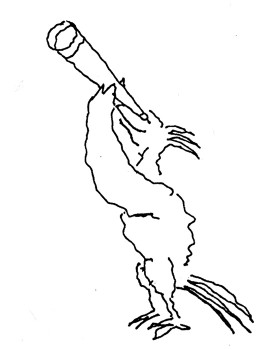 We’re also doing a spot for R.O. Blechman which will go directly to the internet. I’ll post it on this site when it’s done. It was originally to be animated by Ed Smith but he dropped out at the last minute for personal reasons. My loss. However, Matt Clinton, who’s been working with me for the last twenty years (actually it’s only about seven) is animating it. The spot is in good hands. The film is supposed to be done by Christmas. Given that Bob always has revisions, I imagine it’ll go to New Years. Another low budget job. Is that all they make anymore?
We’re also doing a spot for R.O. Blechman which will go directly to the internet. I’ll post it on this site when it’s done. It was originally to be animated by Ed Smith but he dropped out at the last minute for personal reasons. My loss. However, Matt Clinton, who’s been working with me for the last twenty years (actually it’s only about seven) is animating it. The spot is in good hands. The film is supposed to be done by Christmas. Given that Bob always has revisions, I imagine it’ll go to New Years. Another low budget job. Is that all they make anymore?
Other than that, I’ve been seeing movies. There have been a bunch more than usual in that I’m voting for the animated feature. That means I have to see at least 14 of the 18 on the eligible list. This is a hard category. For the most part the films stink. There have been a couple recently that I liked, but those are few and far between. I really enjoyed Rango, and was fortunate to get to meet Gore Verbinski last week. We sat at the same table at a dinner. The film sagged a bit in the middle, but the opening was exceptional.
This past Tuesday I saw a double-bill:
- Gnomeo and Juliet – This is not a film I would have chosen to see, however I was quite entertained by it. Unfortunately I’m still humming Elton John’s songs (“Rocketman” today) after listening to the Elton John songbook playing in the background for an 90 minutes. I thought Emily Blunt’s voice was remarkable. She truly has a voice for animation, and I enjoyed her performance quite a bit. The textures on the garden gnomes was a plus, but the characters seem to be made of feathers not clay. The animation could have done with a bit more weight. This is often a problem I have with CG animation.
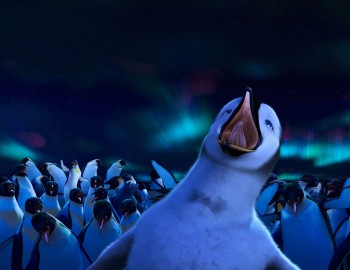 Happy Feet Two was another film that I wouldn’t have selected for myself. However, I really enjoyed it. Finally, an animated film ABOUT SOMETHING. Global warming from frame one of this movie. I loved it. The penguins dance in an inch of slushy water in the opening, as we witness the melting of the polar ice caps. I was a bit confused by the insertion of the Krill brothers. I suppose they were saying that even the smallest of creatures is being affected by the human destruction of the environment. It is the Krill dance underwater that finally knocks down the one ice cap so that the trapped penguin village can escape. The movie moved, and was quite entertaining.
Happy Feet Two was another film that I wouldn’t have selected for myself. However, I really enjoyed it. Finally, an animated film ABOUT SOMETHING. Global warming from frame one of this movie. I loved it. The penguins dance in an inch of slushy water in the opening, as we witness the melting of the polar ice caps. I was a bit confused by the insertion of the Krill brothers. I suppose they were saying that even the smallest of creatures is being affected by the human destruction of the environment. It is the Krill dance underwater that finally knocks down the one ice cap so that the trapped penguin village can escape. The movie moved, and was quite entertaining.MoCap was used for the dancing penguins. All other characters were animated without the aid of the device.
The film also used 3D smartly.
On Wednesday there were another two features:
- Roman Polanski‘s Carnage is his adaptation of the hit stage play by Yasmina Reza. The four actors on screen were brilliant. Kate Winslet, Jodie Foster, John C. Reilly and Christoph Waltz all did superlative work. The film is worth the price of admission just to see Winslet get soused. She’s become a truly sparkling actress. Polanski’s wit is very dry and very dark. I can imagine what some other director
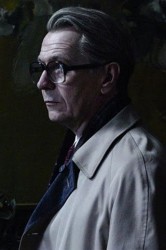 would have pulled in driving home the underlying comedy of this film and was grateful to see him masterfully choreograph this movie.
would have pulled in driving home the underlying comedy of this film and was grateful to see him masterfully choreograph this movie. -
Tinker Tailor Soldier Spy has to be hands down the most subtle of films done this year. A quiet and steady pulse beats trough the magnificent editing of this movie. Gary Oldman’s performance is so quiet that it takes you time to realize how wonderful he is in the part of “Smiley.” There’s no doubt he took Alec Guiness’ version of the character and just added his own subtleties atop that. However, I have to warn you that this film requires the audience to work for its supper. You have to pay minute attention to it or you’ll miss key elements that keep coming at you. I can’t imagine seeing this in DVD unless your eyes are glued to the set and you sit about two feet away from the monitor. It’s worth it; a very good movie.
On Thursday night I saw one film of the double-bill:
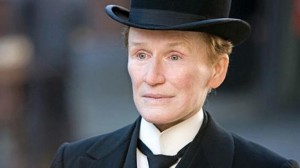 Albert Nobbs stars Glenn Close as a 19th Century woman posing as a man so that she can work without difficulties. This was probably a film I would have waited to see on DVD, but I want to see all films I vote on in theatrical screenings. I’m glad I did. The film was OK, but Close was remarkable. I am not one of her biggest fans – I hated her in Sunset Boulevard -, but I have to hand it to her. This performance was mostly virtuoso. However, it was one of those films where a character alone, on screen, has to say everything aloud so that they can further the exposition. Sorry, people just don’t say everything out loud. I can see why SAG gave her a nomination. However, I think one of the performances of the year was Charlize Theron’s brilliant work in Young Adult. I can’t believe they didn’t even nominate her! Instead, the horrendous Tilda Swinton’s overacting in that amateurish film, We Need To Talk About Kevin, got a nomination.
Albert Nobbs stars Glenn Close as a 19th Century woman posing as a man so that she can work without difficulties. This was probably a film I would have waited to see on DVD, but I want to see all films I vote on in theatrical screenings. I’m glad I did. The film was OK, but Close was remarkable. I am not one of her biggest fans – I hated her in Sunset Boulevard -, but I have to hand it to her. This performance was mostly virtuoso. However, it was one of those films where a character alone, on screen, has to say everything aloud so that they can further the exposition. Sorry, people just don’t say everything out loud. I can see why SAG gave her a nomination. However, I think one of the performances of the year was Charlize Theron’s brilliant work in Young Adult. I can’t believe they didn’t even nominate her! Instead, the horrendous Tilda Swinton’s overacting in that amateurish film, We Need To Talk About Kevin, got a nomination.- War Horse also screened last night, but I’d gone to the World Premiere of that at Lincoln Center. Spielberg and the cast introduced the film which was not a great effort. I would have preferred seeing Black Beauty on the big screen. Even the recent version that starred David Thewlis would have been better. This Spielberg film was all too serious and, as a result, tedious. He stole from John Ford, he stole from Gone With the Wind, he stole from everything under the sun, and it all was too predictable.
 I was sad to learn of Christopher Hitchens‘ death yesterday. He was someone who always made me gnash my teeth while listening to his outrageous political commentary. But he was particularly articulate and intelligent albeit acerbic which always forced me to stay with him. He was an Atheist and argued his points well. I’m sure this didn’t please many watching him on television, though I usually felt in agreement with him on this subject.
I was sad to learn of Christopher Hitchens‘ death yesterday. He was someone who always made me gnash my teeth while listening to his outrageous political commentary. But he was particularly articulate and intelligent albeit acerbic which always forced me to stay with him. He was an Atheist and argued his points well. I’m sure this didn’t please many watching him on television, though I usually felt in agreement with him on this subject.
I watched closely in the last 18 months or so as he very openly talked about his esophageal cancer and how it was forcing him to slow down. It was great to see that the NYTimes gave his obituary front page coverage.
A.O. Scott in the NYTimes praised Brad Bird‘s work in Mission Impossible 6, while appropriately taking the movie with little seriousness. Goodbye Brad Bird, animation director. Neil Genzingler did the dirty work in reviewing the new Chipmunk film, Alvin and the Chipmunks: Chipwrecked. I can’t believe this is one of the films I’m supposed to watch for the Oscar race.
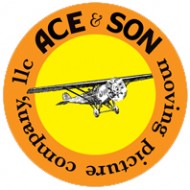 Last night, Friday, I went to a Christmas gathering at Richard O’Connor‘s new company, Ace and Son. I’d been to the space once before after he’d just opened for business. Richard had brought a catalogue from this year’s Ottawa Festival for me, and I went to retrieve it. Then the studio was sparsely decorated, but now it’s starting to feel lived in, with a warm aura about it. They’d just completed their animated Christmas card so shared it with us. We also got a piece of the film as we left, a painted drawing that served as a cel from the film. It’s always fun to take home gifts from parties.
Last night, Friday, I went to a Christmas gathering at Richard O’Connor‘s new company, Ace and Son. I’d been to the space once before after he’d just opened for business. Richard had brought a catalogue from this year’s Ottawa Festival for me, and I went to retrieve it. Then the studio was sparsely decorated, but now it’s starting to feel lived in, with a warm aura about it. They’d just completed their animated Christmas card so shared it with us. We also got a piece of the film as we left, a painted drawing that served as a cel from the film. It’s always fun to take home gifts from parties.
- As of yesterday the IFC Center in NY is presenting 15 films from Studio Ghibli. Mosat of Miyazaki’s masterworks can be seen in this series which runs through January 12th. Here’s a NYTimes article about the screening. The films to be screened will include:
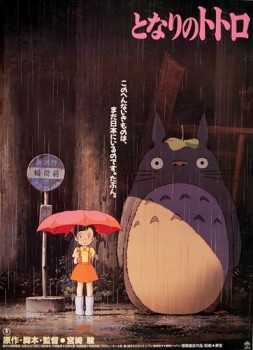 Castle in the Sky *
Castle in the Sky *Wednesday, December 28 – Thursday, January 12
The Cat Returns
Friday, December 30 – Thursday, January 5
Howl’s Moving Castle *
Wednesday, December 28 – Thursday, January 5
Kiki’s Delivery Service *
Friday, December 16 – Thursday, January 12
My Neighbors The Yamadas
Friday, December 23 – Thursday, December 29
My Neighbor Totoro *
Friday, December 16 – Thursday, January 5
Nausicaa of the Valley of the Wind *
Friday, December 16 – Thursday, January 5
Ocean Waves
Thursday, December 29 – Thursday, January 5
 Only Yesterday
Only Yesterday
Friday, January 6 – Thursday, January 12
Pom Poko
Friday, January 6 – Thursday, January 12
Ponyo *
Friday, December 30 – Thursday, January 5
Porco Rosso *
Friday, December 23 – Thursday, January 5
Princess Mononoke *
Friday, December 16 – Thursday, January 12
Spirited Away *
Saturday, December 17 – Thursday, January 12
Whisper of the Heart
Wednesday, December 28 – Thursday, January 5
* Those followed by * are films by Miyazaki.
Go here to see the schedule and the exact times for the screenings.
Bill Peckmann &Comic Art &Daily post 16 Dec 2011 07:16 am
King of the Cowpokes
Another excellent post from the collection of Bill Peckmann. Here, I turn it over to Bill:
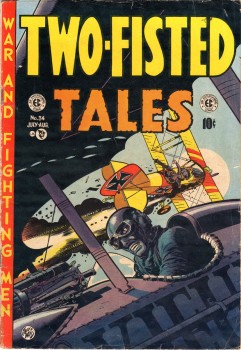 “King of the Cowboy Cartoonists”. If there was ever such a title, Jack Davis would garner my vote!
“King of the Cowboy Cartoonists”. If there was ever such a title, Jack Davis would garner my vote!
Here are two westerns by Jack that ran in EC Comics’ title “Two-Fisted Tales”.
In “TFT” No. 34, July-Aug 1953, the first story “Betsy”, was not only drawn by Jack but also written by him. The usual editor/writer of the comic book Harvey Kurtzman, was laid up with a serious illness, so Jack and the rest of the cartoon crew jumped in and wrote their own tales.
Jack’s story “Betsy” is a riff on “High Noon”, a very popular movie of its’ day. (Gary Cooper even makes a cameo appearance in the story. More on that in a later post.) It’s a labor of love for Jack and it shows. It’s laid out by him in that wonderful Kurtzman lay-out style and the coloring by Marie Severin is really exceptional.
Jack also seems to be ahead of his time with this story because it’s done quite a few years before the gritty, gnarly noir western movies of Clint Eastwood, but it certainly has the feel of one those films.
(Here’s the cover of the comic, which we’ve posted already, but you might want to run it at smaller size, ala “Ben and Me” today. I hope your readers enjoyed “Ben” as much as we did.)
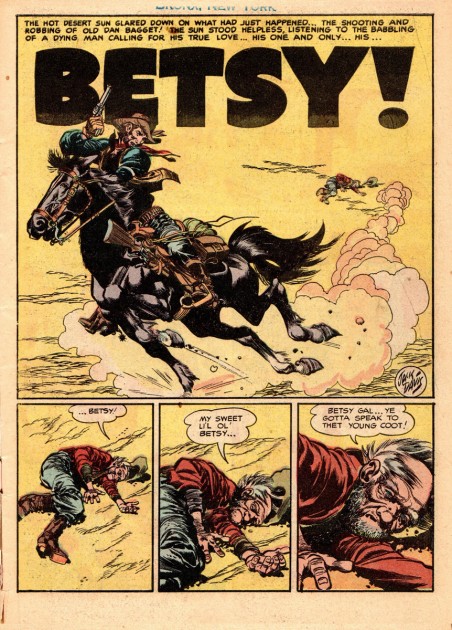 1
1
Here’s Jack’s second western story titled “Gunfire”. This appeared in “The New Two-Fisted Tales”, No. 36, Jan. 1954. With this issue, Harvey Kurtzman was not at the writer/editorship helm of the comic any more, the success of Mad comics took up all of Harvey’s time, and the running of “The New TFT” went to John Severin and writer Colin Dawkins.
“Gunfire” was written by Dawkins and illustrated by Jack, and Jack’s in his best Kurtzman type lay-out mode, beautifully constructed pages and panels.
(Even though Clint Eastwood was only 23 years old at the time when this story came out, and not a movie star yet, somehow Jack was able to come up with the perfect prototype of a Clint Eastwood western hero. It’s all there, looks and costume and action! It makes ya wonder.)
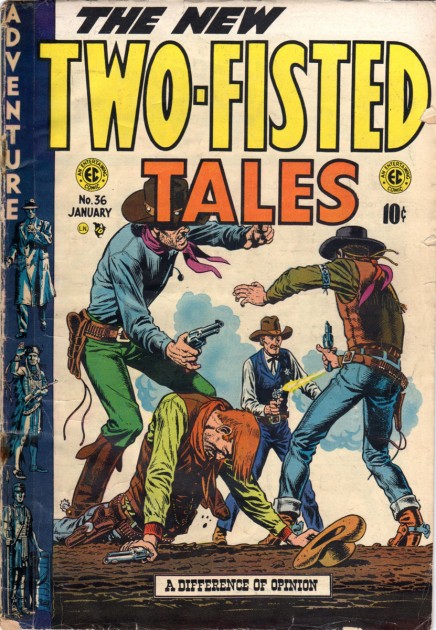
Here’s the cover of #36.
This cover of “The New Two-Fisted Tales” no. 36
was penciled by John Severin and inked by Bill Elder.
It’s not a Jack Davis cover.
Here are a couple of ruffs Jack did for Western illustrations.
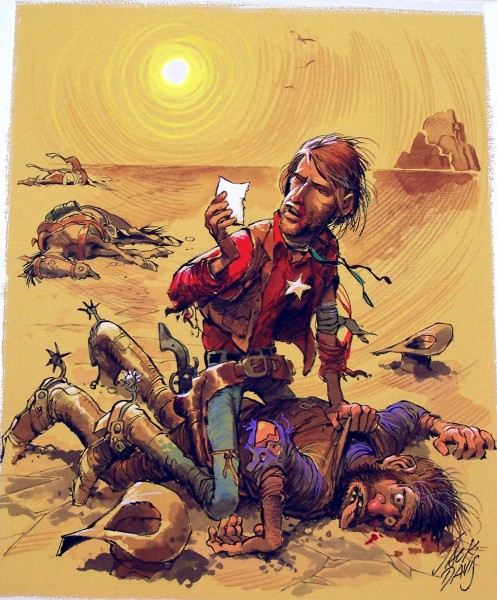 1
1
Many thanks to Bill Peckmann for sharing his collection with us.
Bill Peckmann &Comic Art 15 Dec 2011 06:45 am
EC Fan-Addicts
Here’s a package I received from Bill Peckmann:
- In the parlance of the old MAD editors: “Hey gang, here’s some very unnecessary nostalgia for ya!”
In their heyday, EC Comics’ hardcore readership always kept the letter columns of EC Comics packed with enjoyable, knowledgeable comments. (I’d always go to the letter columns before I would read the stories in the comic.) With those kind of responses coming in, someone at EC, fortunately came up with the idea of starting an official EC fan club in the best EC tradition. (Looking back on all this, EC always seemed to be ahead of the curve in the industry and would adapt thru all of their trials and tribulations, the proof in the pudding is the incredible run of MAD.)
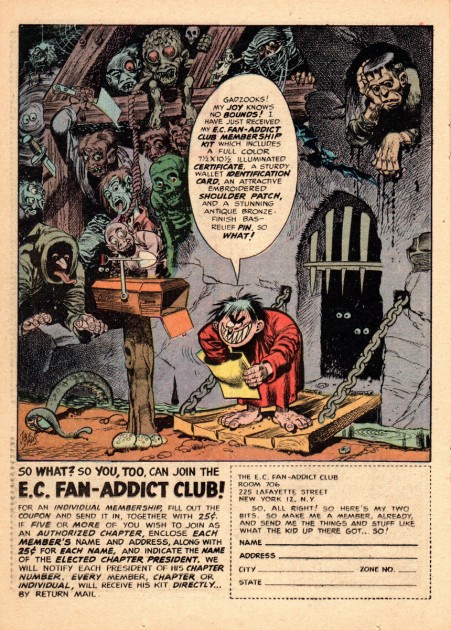 1
1The first in-house ad is by Jack Davis
the second one by Wally Wood.
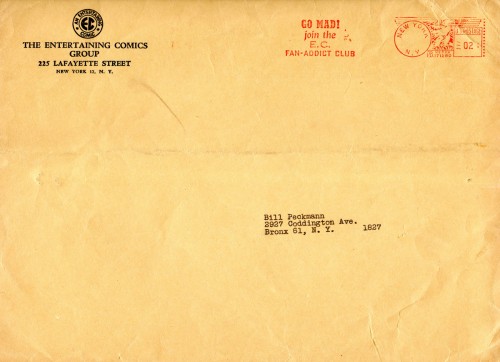 3
3
Unfortunately the only things that remain from the original
EC Fan-Addict package is the envelope everything was sent in,
the certificate and the 5 bulletins that were published.
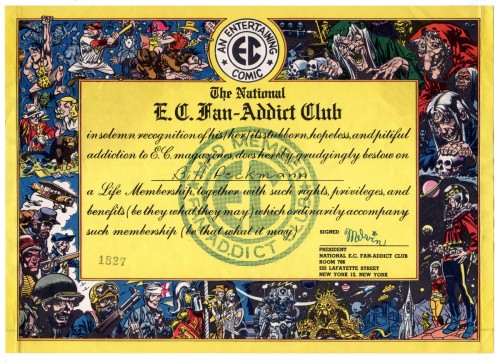 4
4
The certificate by Jack Davis.
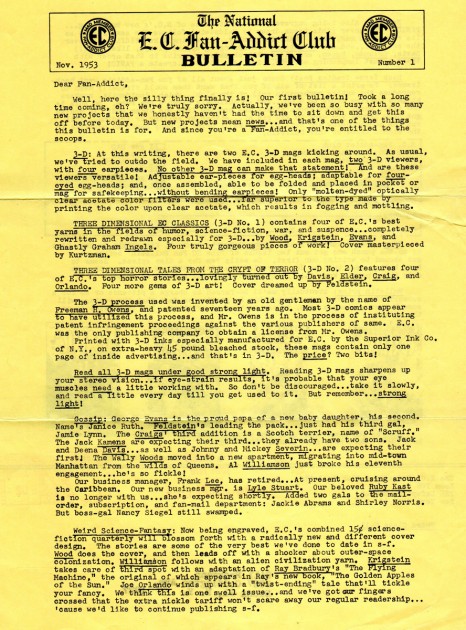 5
5
The first two page bulletin.
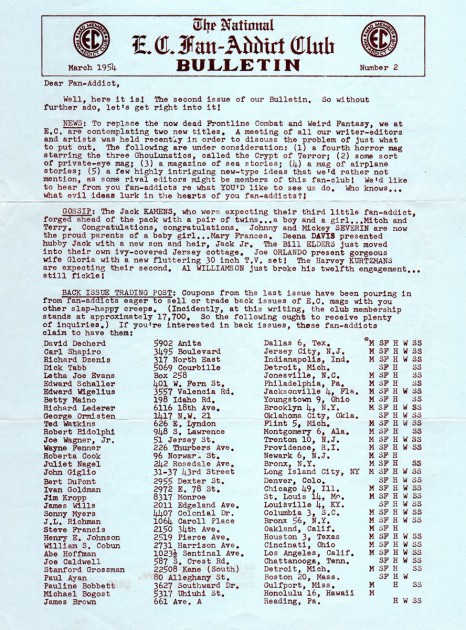 7
7
Note that in the “Gossip” column Jack Davis’ wife Deena
gave birth to their son Jack Jr., who then later made his
way in the world as an architect. It was Jack Jr. who
designed the house and porch that Jack Sr. is sitting in,
in the photo in the last JD posting. (It’s the porch that the
Gee thought was pretty cool.)
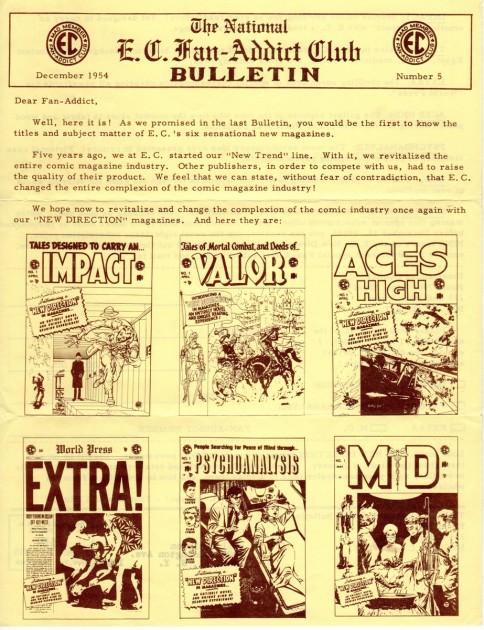 13
13
All good things must come to an end,
the fifth and final issue of the Bulletin.
We started the blog with inhouse ads, so we might as well end it with a few more.
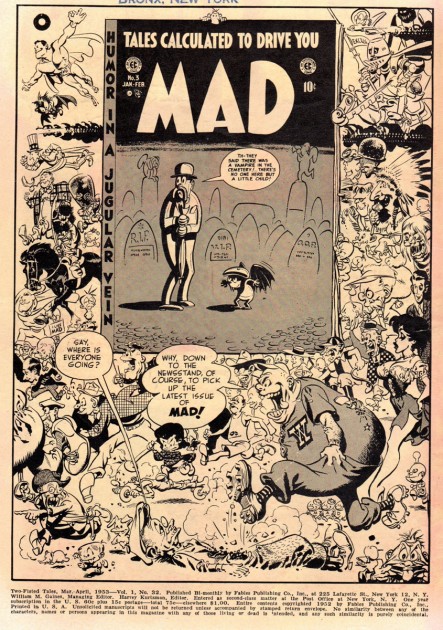 15
15This is Wally Wood’s promo for MAD no. 3.
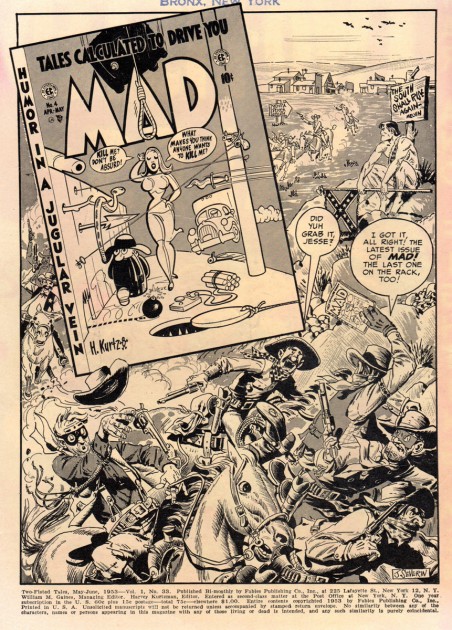 16
16
Ad for MAD No. 4 by John Severin.
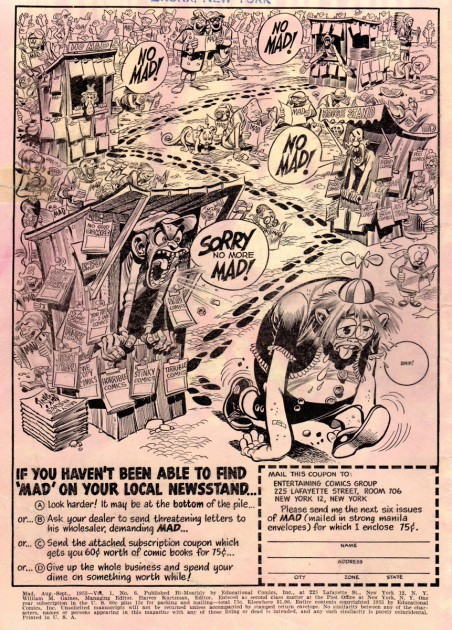 18
18
By the one and only Jack Davis.
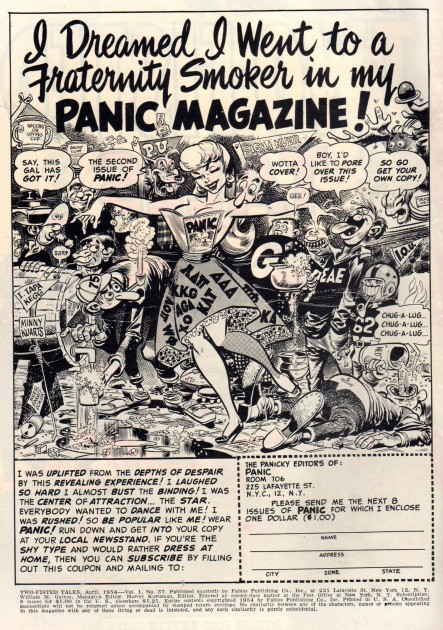 19
19
Jack Davis flogging EC’s own MAD comic book imitation PANIC.
(That’s All Folks!)
Many thanks to Bill Peckmann for sharing this great and unusual memorabilia.
Animation &Animation Artifacts 14 Dec 2011 07:03 am
Mickey and the Shadows – 3
Here is the next part of the violent shadows in the scene from The Sorcerer’s Apprentice. Mickey has to put a stop to the broom before it floods the Sorcerer’s workroom.
The scene was animated by Riley Thompson with Harvey Toombs assisting. The sequence director was James Algar.
To see the last two parts of the shadow go to: Part 1, Part 2
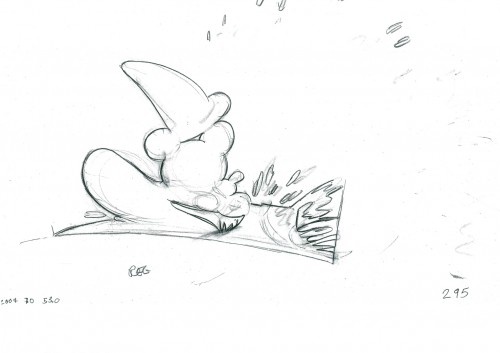 295
____________________________
295
____________________________
The following QT incorporates all the drawings from this post
and the two earlier shadow posts.
All posts will be combined in the final piece.
All drawings were exposed per the Exposure Sheets.
this scene comes in at 5’30″
Books &Illustration 13 Dec 2011 07:05 am
Christmas Cards
- This past Saturday, hundreds of 20 and 30-somethings filled the streets of Manhattan dressed as Santa. Apparently they were somehow raising money for “Toys for Tots” by bar-hopping in the Santa uniform (many of them very makeshift). I don’t know how it worked, though it felt a bit like the Christmas version of St. Patrick’s Day (without the parade.) A lot of white guys inebriated.
Regardless. The proliferation of Santa’s, however, reminded me of a Christmas card I did back in 1978. The card was picked up by Steven Heller and used in a book he edited called Artist’s Christmas Cards. (I always thought it should have been called Illustrator’s Christmas Cards, though I have to admit that I’d call two or three in the book “Artists”.) There was no pay for it, but there was the enjoyment of having my card connected to some great company.
I thought it’d be interesting to post a few of the cards in the book. So here we have them:
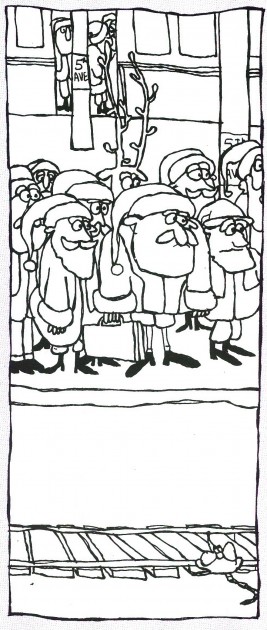
Here’s MY card that reminded me
of Saturday’s funfest.

The original book’s cover with a card by
Paul Degen gracing the red face of the book.
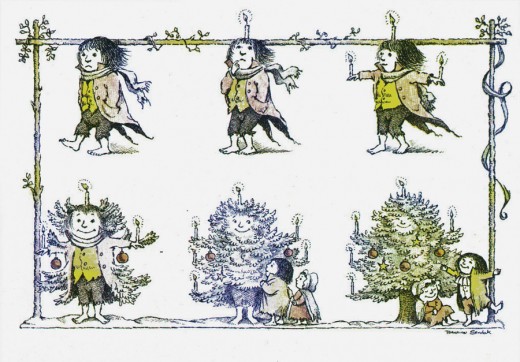
This MAURICE SENDAK card would later become the
animated opening to Simple Gifts, a show for which
I acted as Asst Director for R.O. Blechman in 1978.
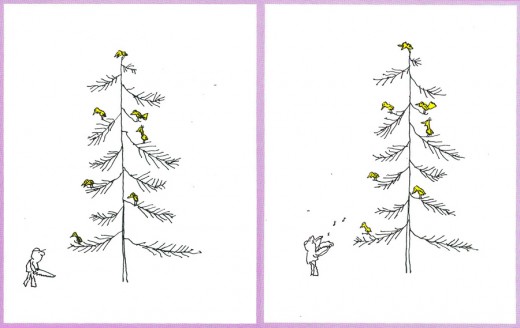
BLECHMAN’s card, which he turned into an animated
I.D. spot for CBS – which has become very visible on the net.
Commentary &Frame Grabs 12 Dec 2011 06:03 am
Iwerks’ Sinbad
– When I was young, about 12 years old, I saved my money to buy an 8mm projector. This was long before DVDs, before VHS tapes and before even Super 8mm. The used projector cost me $20. I bought it from a NY store called Peerless Photo Equipment. They also had a large department of home market 8mm shorts that could be bought for relatively little money. Lots of Castle films (meaning Universal short subjects 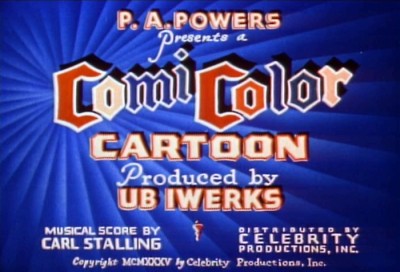 Walter Lantz Woody Woodpecker), a few Disney shorts, a few WB shorts and plenty of Ub Iwerks films. I was an Iwerks fan and my immediate interest was in these films which I had never seen. The same day I bought that projector, I bought a 6 min version of “Jack & the Beanstalk” as well as a 3 min version of “Sinbad the Sailor.” Both were sold only in B&W, and they were silent with a few intertitles. (It’s amazing how well they worked as silents.)
Walter Lantz Woody Woodpecker), a few Disney shorts, a few WB shorts and plenty of Ub Iwerks films. I was an Iwerks fan and my immediate interest was in these films which I had never seen. The same day I bought that projector, I bought a 6 min version of “Jack & the Beanstalk” as well as a 3 min version of “Sinbad the Sailor.” Both were sold only in B&W, and they were silent with a few intertitles. (It’s amazing how well they worked as silents.)
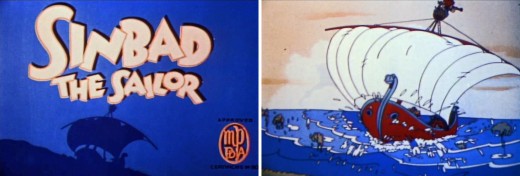
When I finally got to see both films in color it was an amazing surprise for me.
I knew they were in Cinecolor, and I expected much worse than what I got.
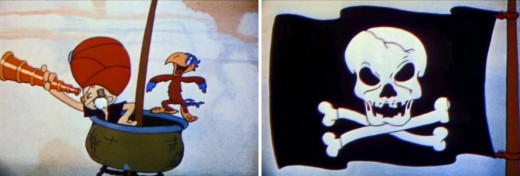
With Sinbad, I was surprised at how little I remembered of that film.
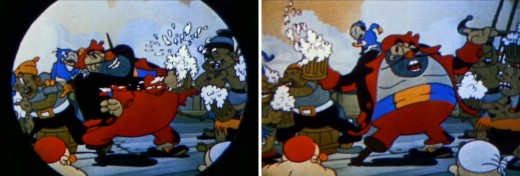
I remembered almost nothing about the pirates. I didn’t forget
Sinbad in the crow’s nest with his parrot espying on the other ship.
I particularly remembered the big bird at the end of the film.
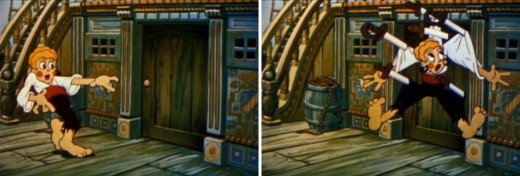
The shortened version did not include this anti-gay joke in it.
Watching it for the first time, I wondered how many other such
jokes were in the films. There were plenty of racist jokes
(including the one I eliminated at the very end of this film.)
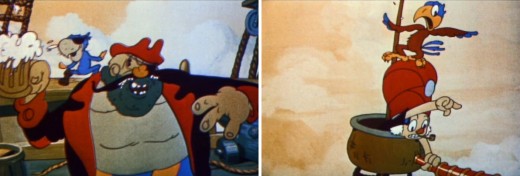
It’s amazing how much those early short films stayed with me over the years,
however this one has just left an impression without my remembering much of
the details of the story.
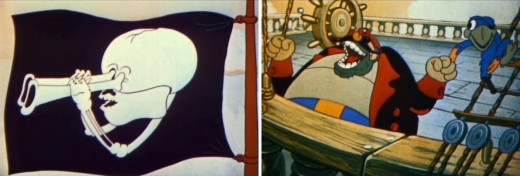
After all, I studied every frame of these films. I’d figured out how to
jerry-rig my 8mm projector to allow me to do that. I could watch each
film one frame at a time.
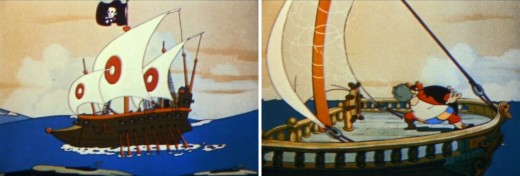
I remember when I first met Grim Natwick that I told him his was the
first animation I ever studied. “Jack & The Beanstalk” left an impression.
Grim wasn’t impressed when I told him.
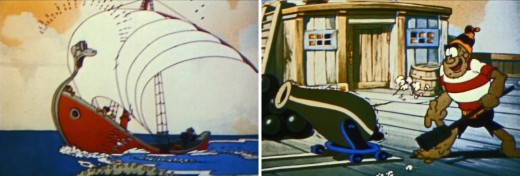
The most I could learn about the crew of this film is that Grim Natwick
(who probably directed) animated along with Stephen Bosustow.
I believe Pete Burness was also with the studio at this time. Berny Wolf
was there at this time and may have animated on Sinbad.
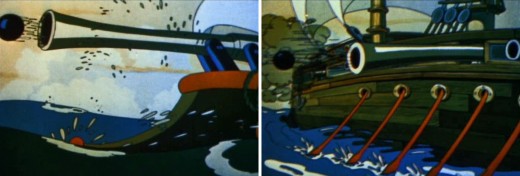
I soon had bought a complete library of animated shorts.
Both “Jack & The Beanstalk” and Woody Woodpecker in
“Ace In The Hole” were favorites of mine back then.
Grim Natwick and Alex Lovy.

I also bought a couple of WB shorts. I particularly liked the
Chuck Jones directed films. I’d seen “Hair Raising Hare” and
“Rabbit Punch” so many times in the 8mm versions that
it’s almost hard to watch them again.
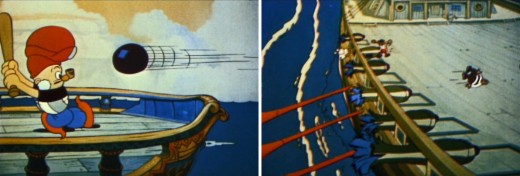
The WB cartoons handled the titles well. They did them
as subtitles, and I liked buying these films for this reason.
Of course, it was a plus that they were such good films.
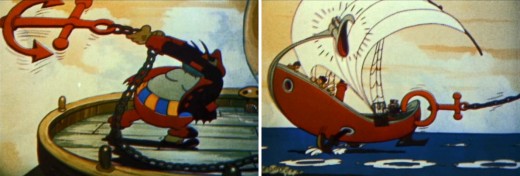
I’m surprised that the Iwerks staff took no attempt to adapt the actual story
of Sinbad from the Arabian Nights, but instead they completely created their own.
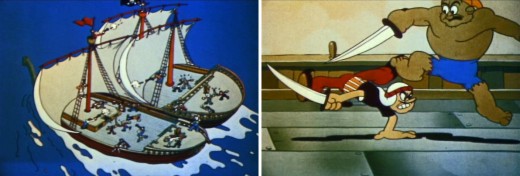
Ted Sears and Otto Englander, were both doing story work for Iwerks,
so they probably had a hand in shaping this film. Eventually, both men
would move on to Disney’s studio where they did exceptional work.
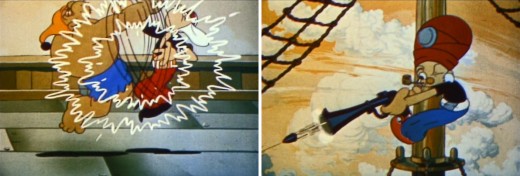
By the time this film was made, Iwerks, himself, had lost interest
in the actual production of the shorts, and he’d tried to get Grim Natwick
to take a piece of the studio to run the production.
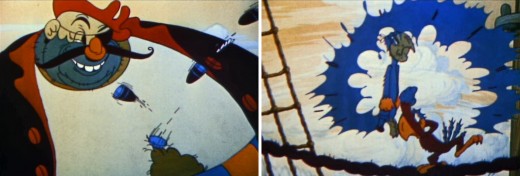
Natwick had refused knowing full well how difficult it was to
manage a studio and try to stay afloat. Especially knowing,
as I’m sure he did, that the studio was in trouble.
He rejected the offer.
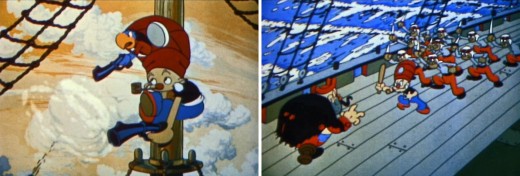
In fact, within a year Natwick, Shamus Culhane and others had
migrated to the Disney studio. Culhane had a side-step going back
to NY to work under Bert Gillette for Van Buren. When that ended
badly, Culhane went to Disney to work for less than he made in NY.
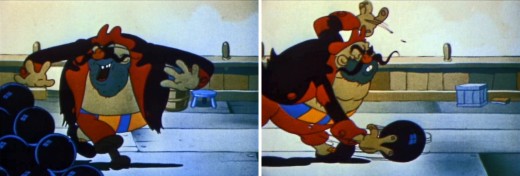
Berny Wolf, Al Eugster and Steve Bosustow also moved to Disney’s.
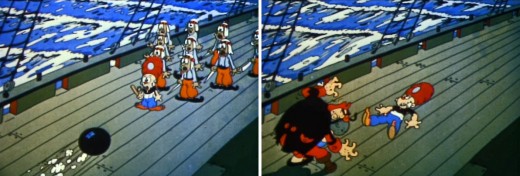
The bowling pin joke has got to be one of the older jokes used in animated films.
I’m sure the addition of sound helped sell the gag during the early sound years.
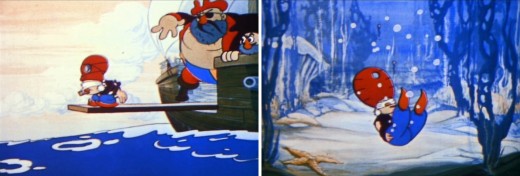
Others at the studio such as Chuck Jones and Frank Tashlin
as well as Bugs Hardaway and composer, Carl Stalling,
moved over to Schlesinger’s studio at Warner Brothers.
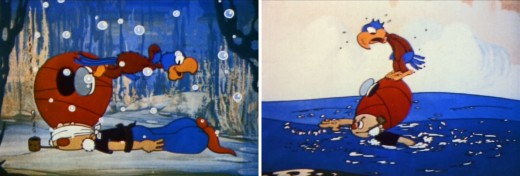
“Sinbad” was part of a trilogy of films Iwerks made from the
Arabian Nights. There was also “Aladdin” and “Ali Baba.”
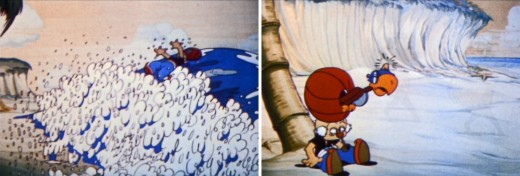
All three were really just titles to hang a cartoon on.
These were part of the attempt to try to gain a bit of success
after Willie Whopper and Flip the Frog had both failed as series.
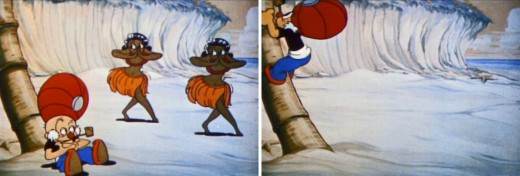
There’s no doubt that Grim Natwick did these dancing girls.
It was his signature style at the time.
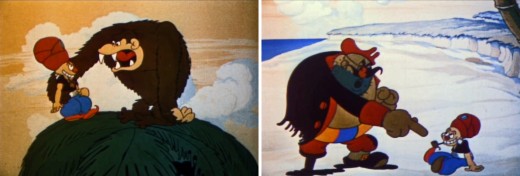
Iwerks was moving his studio to the edge of the precipice.
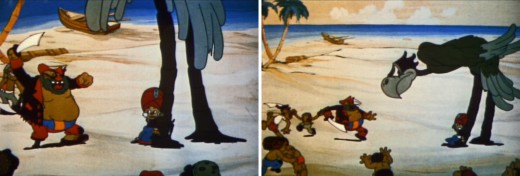
Iwerks introduced his version of the multiplane camera about
this time, trying to offer something new to the medium.
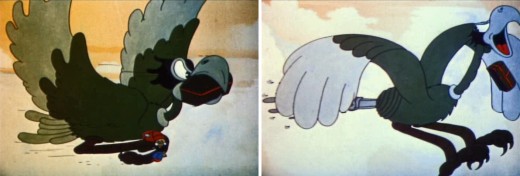
The Headless Horseman and The Valiant Tailor both showcased
the multiplane camera in its production. Neither took off.
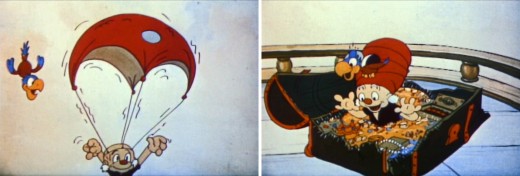
It wasn’t much longer before the Iwerks studio
floundered and ultimately died off.
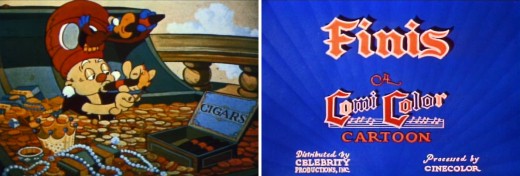
The final joke (cut out) shows the cigar exploding leaving
Sinbad with a black face with just a touch of racist humor.
________________________
.
Here’s the YouTube version of this short.
